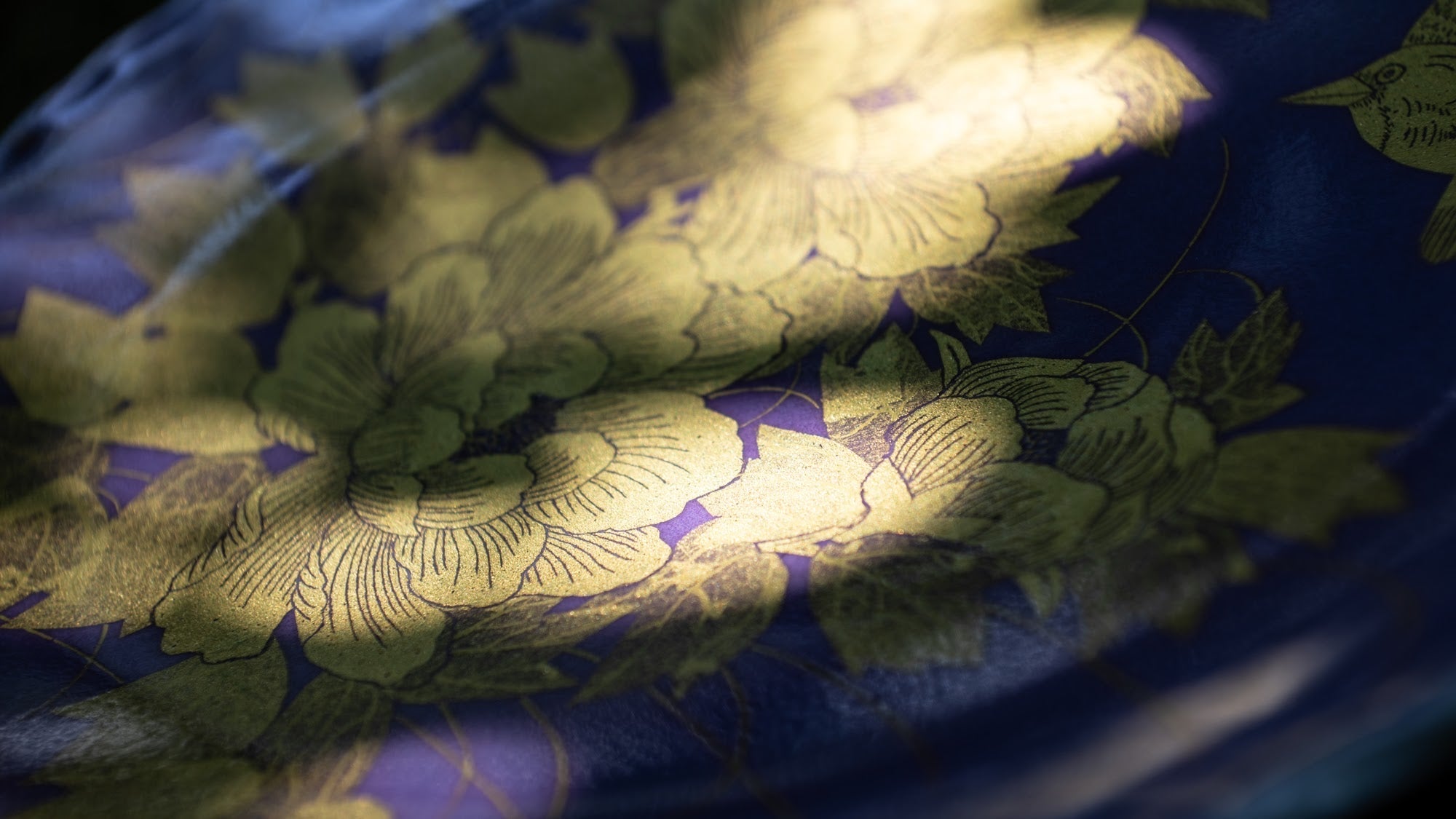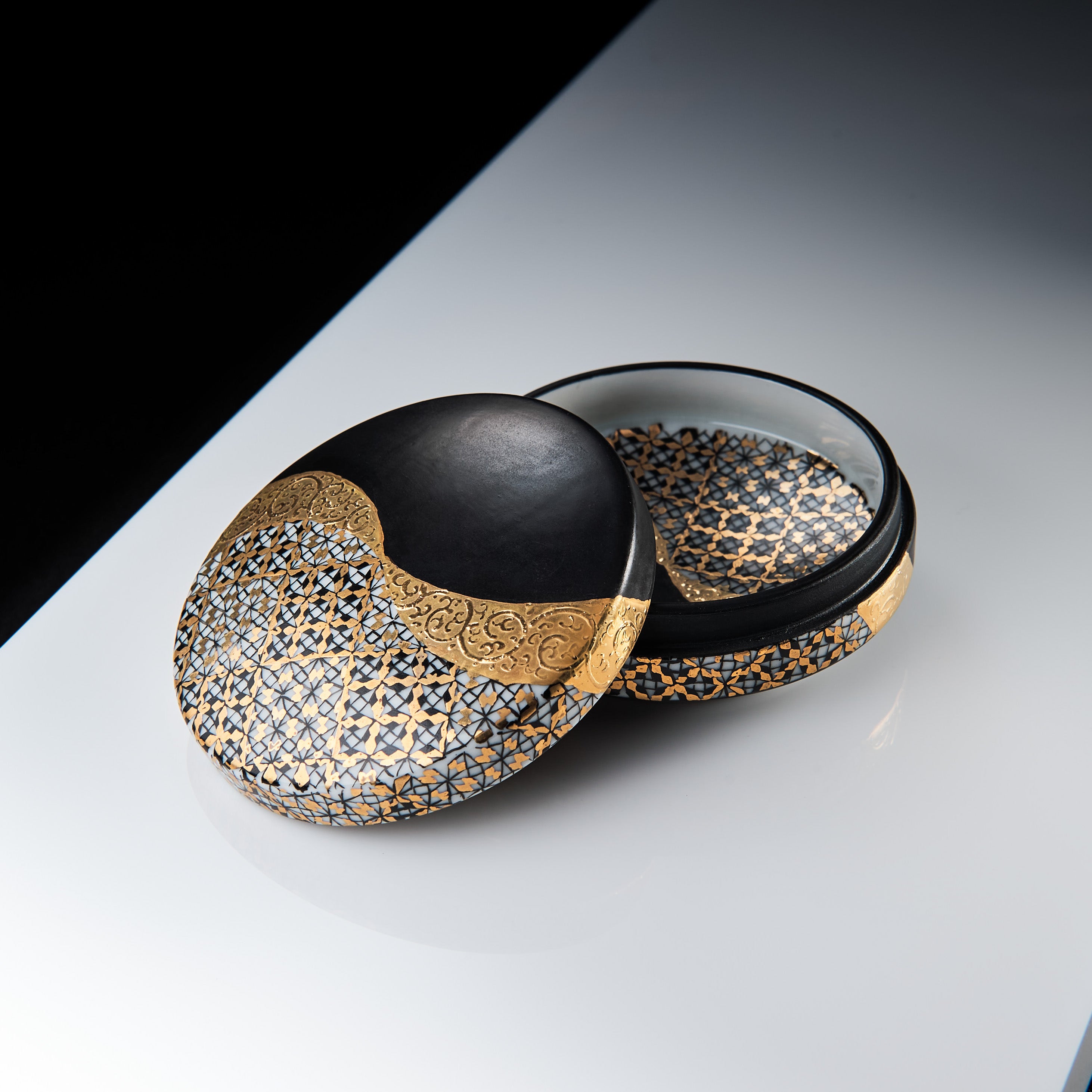
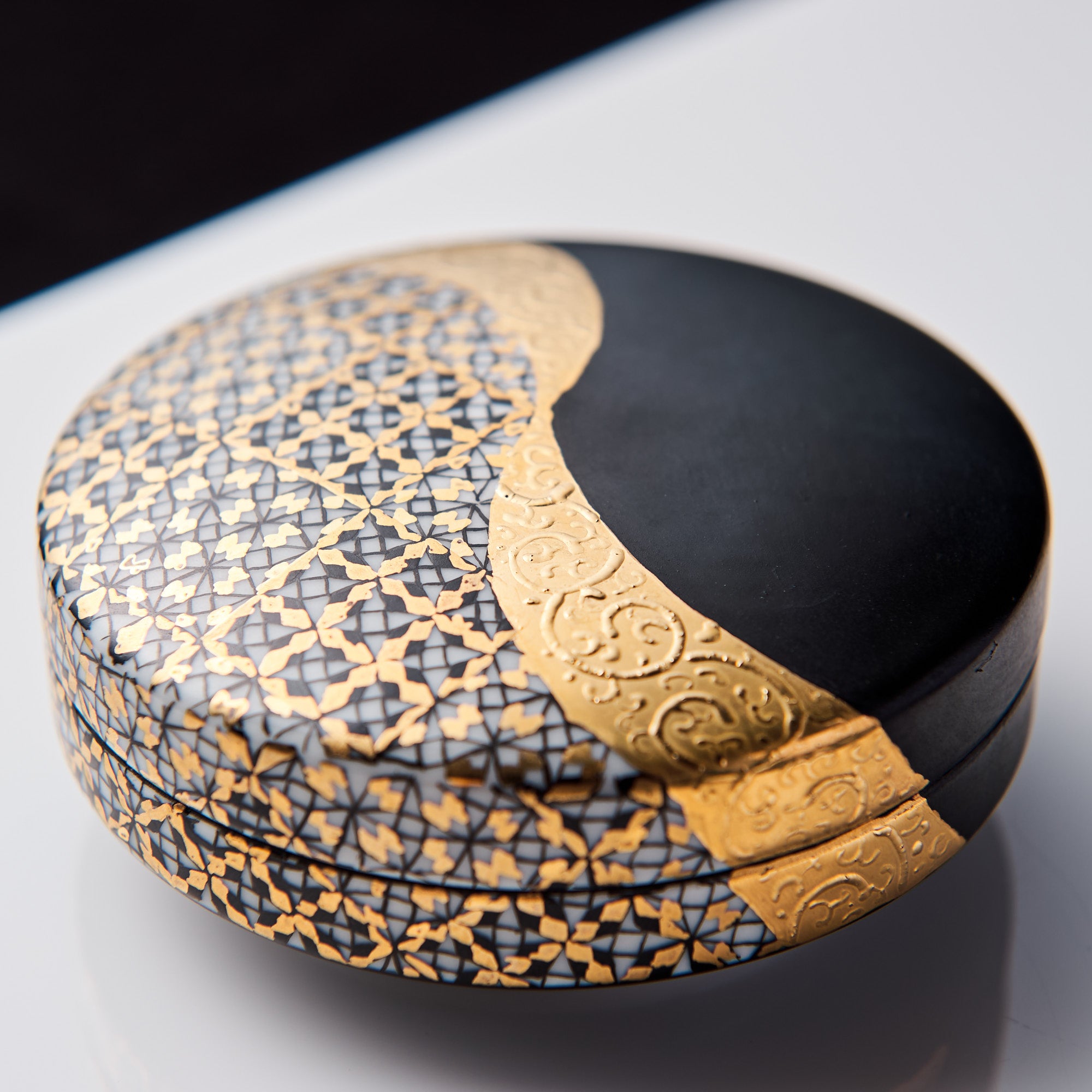
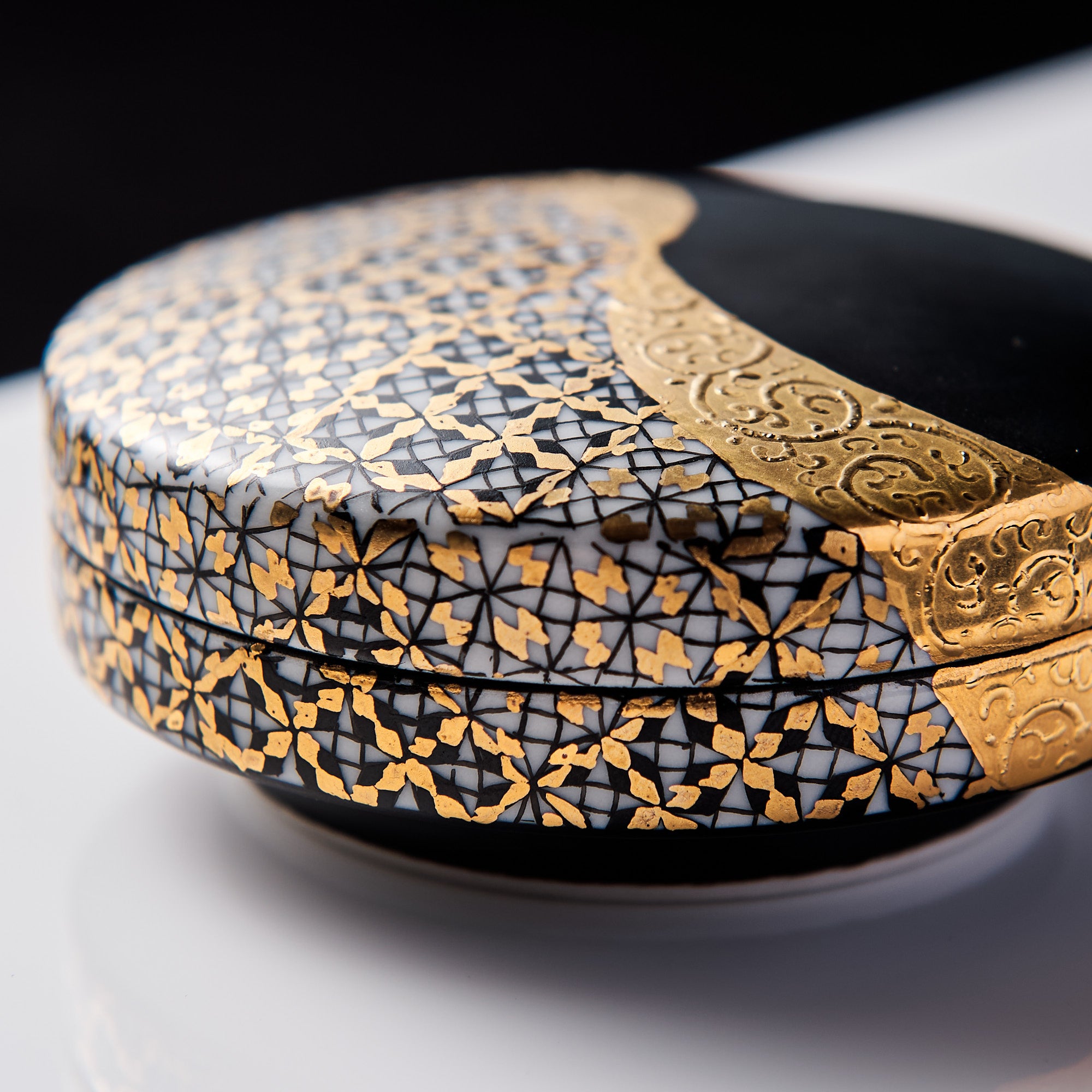
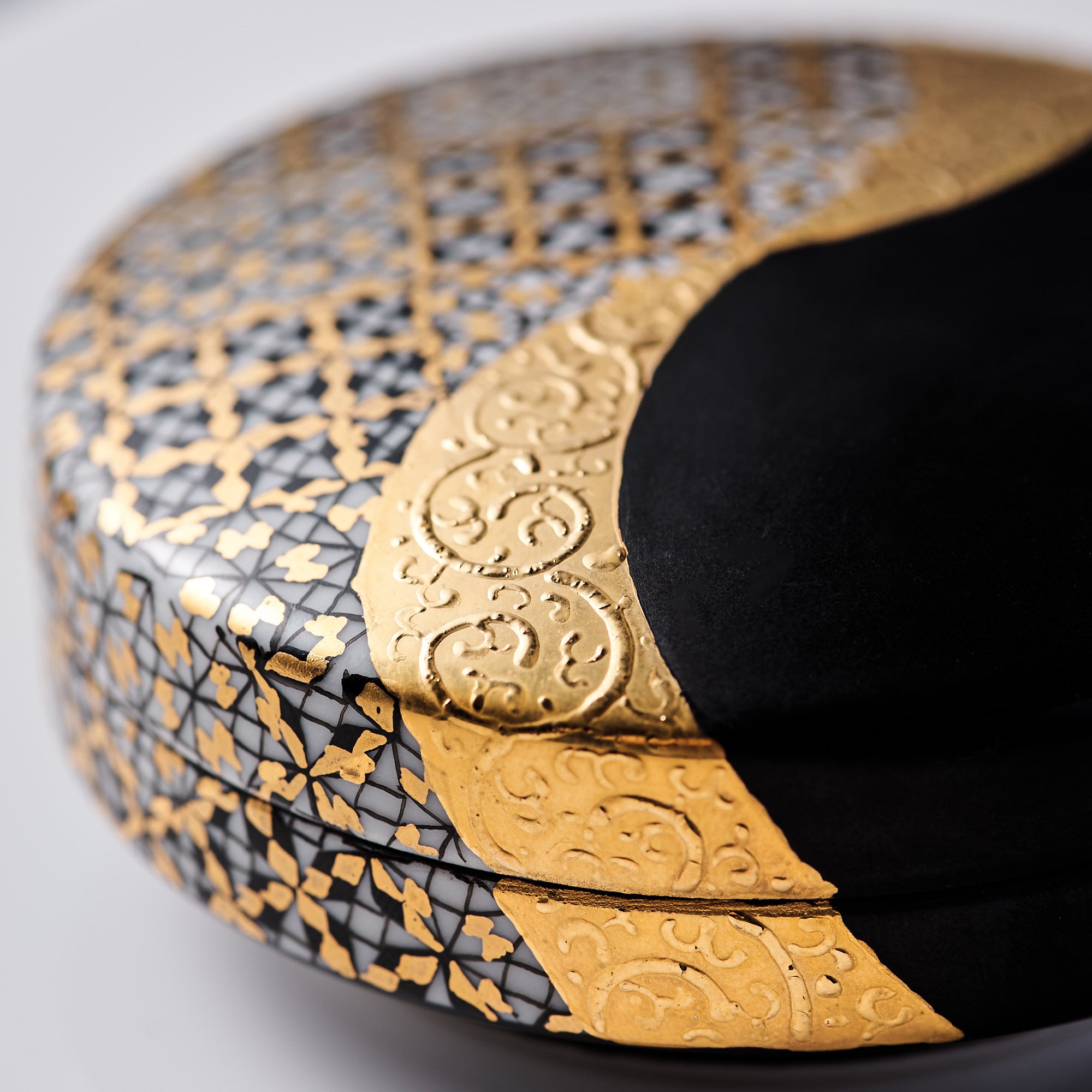
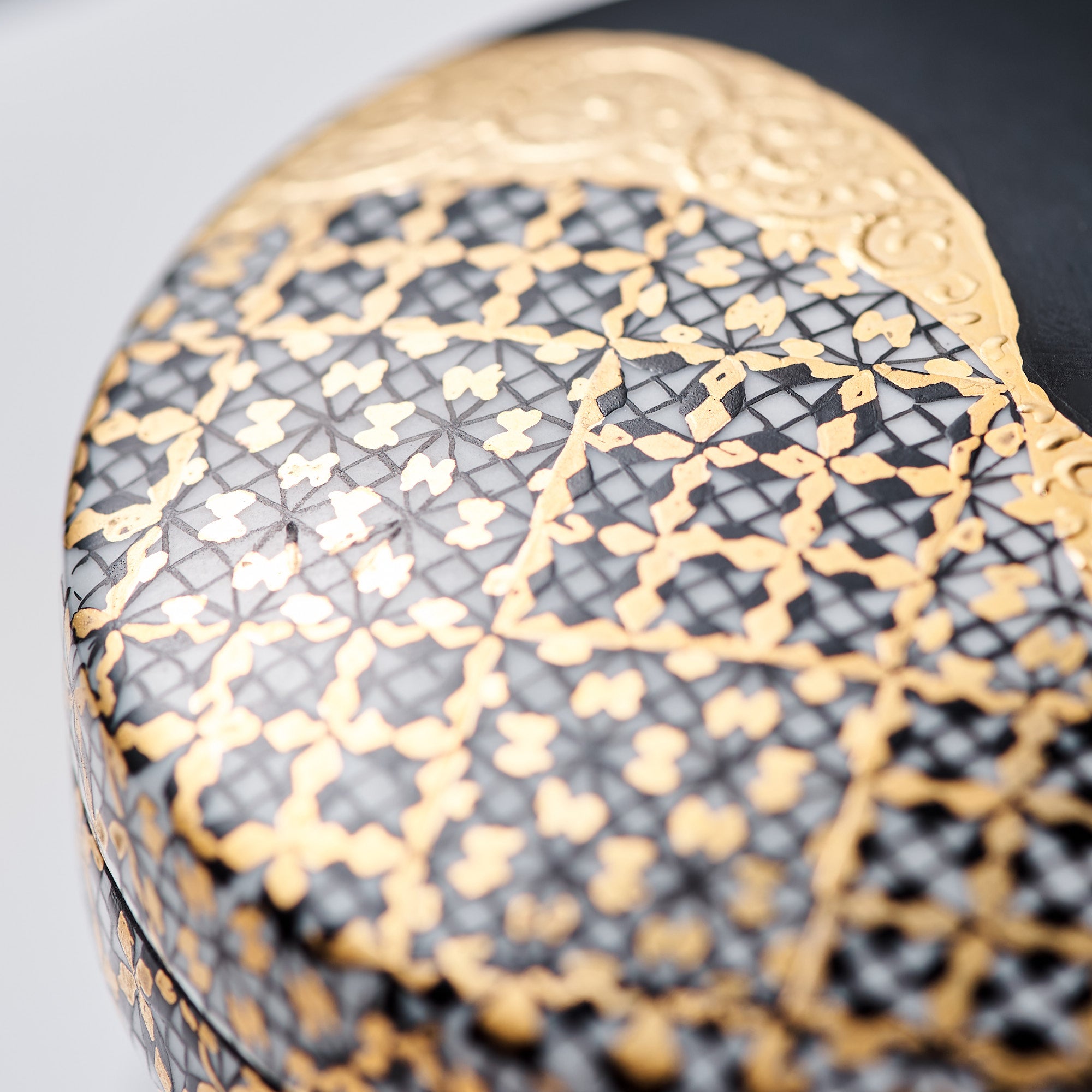
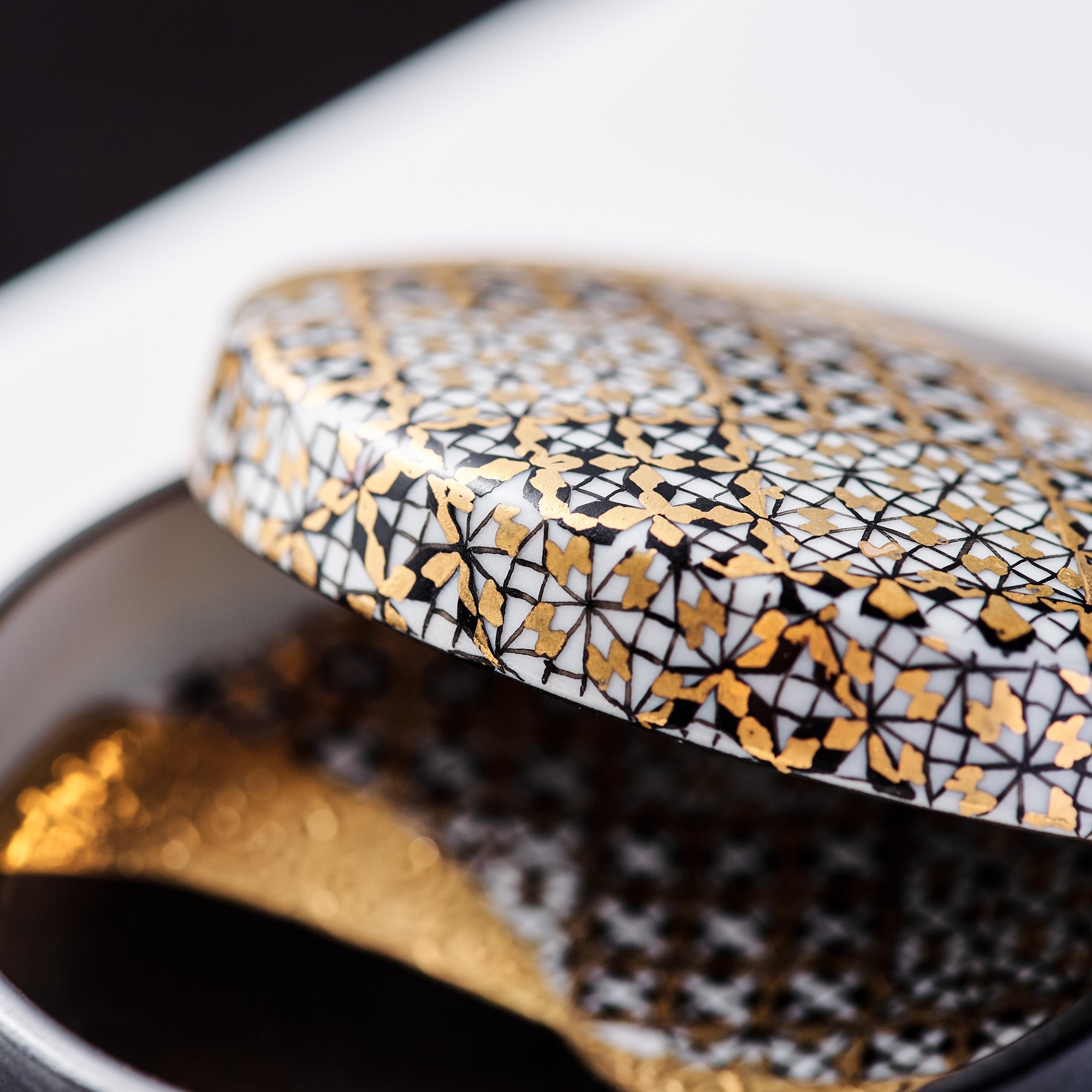
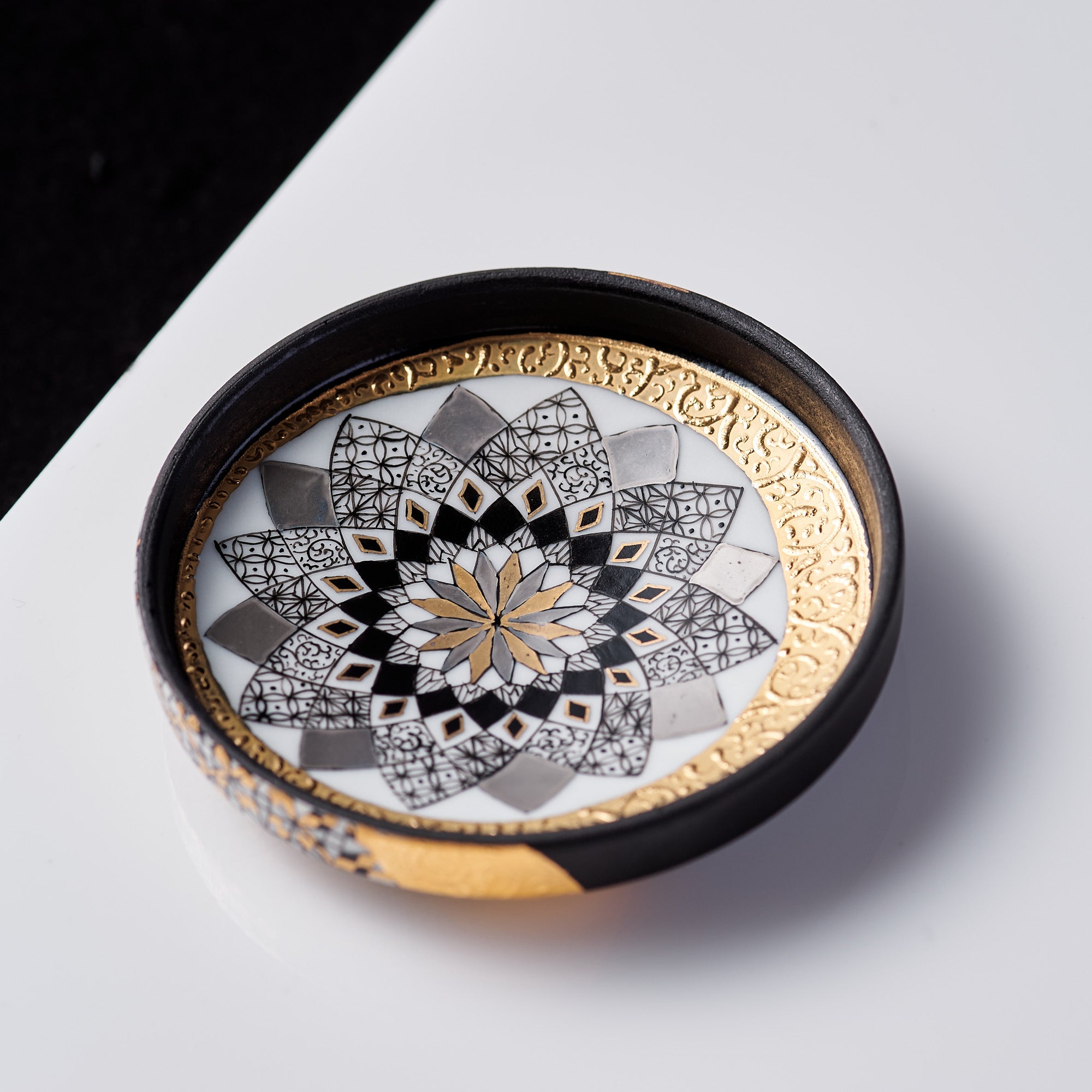
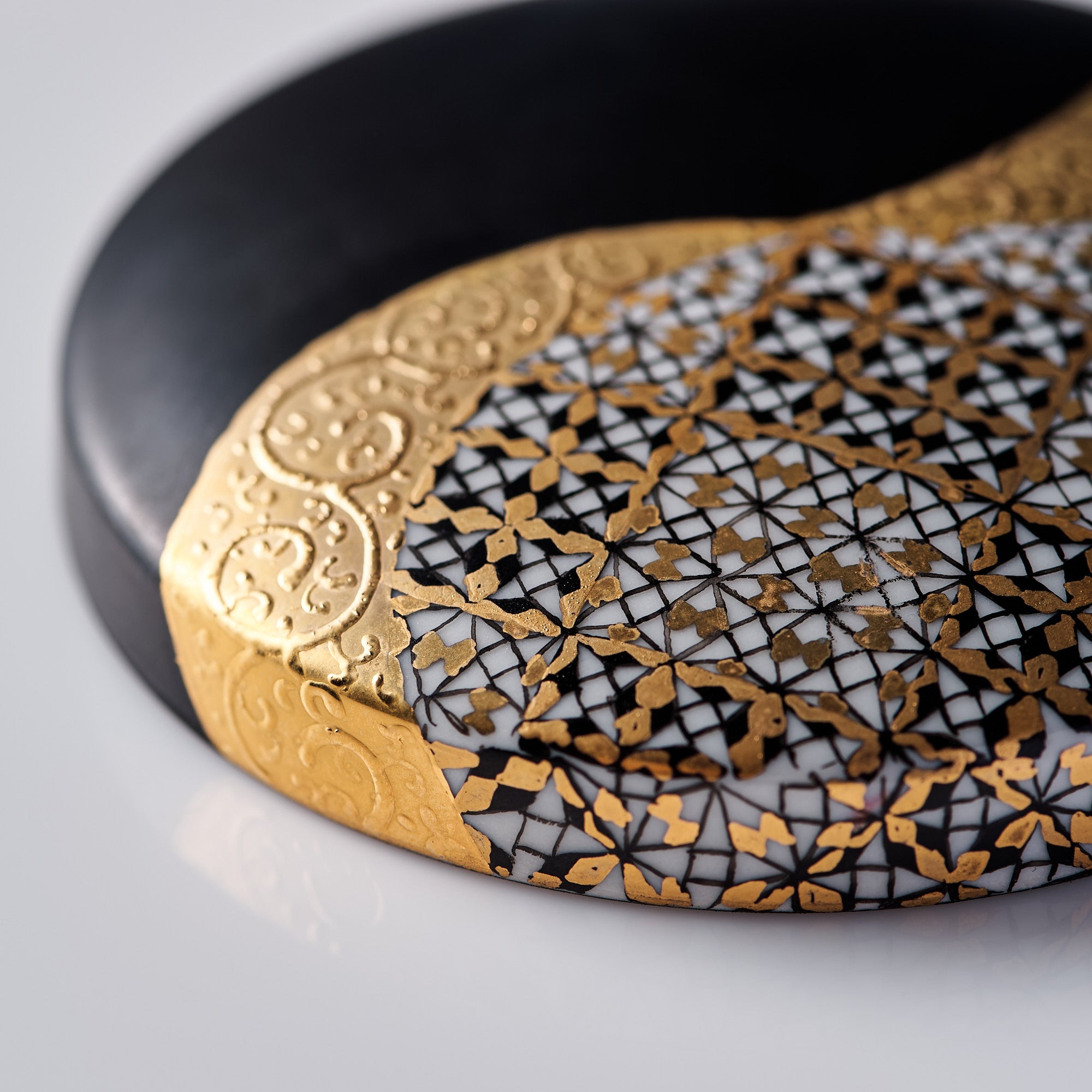
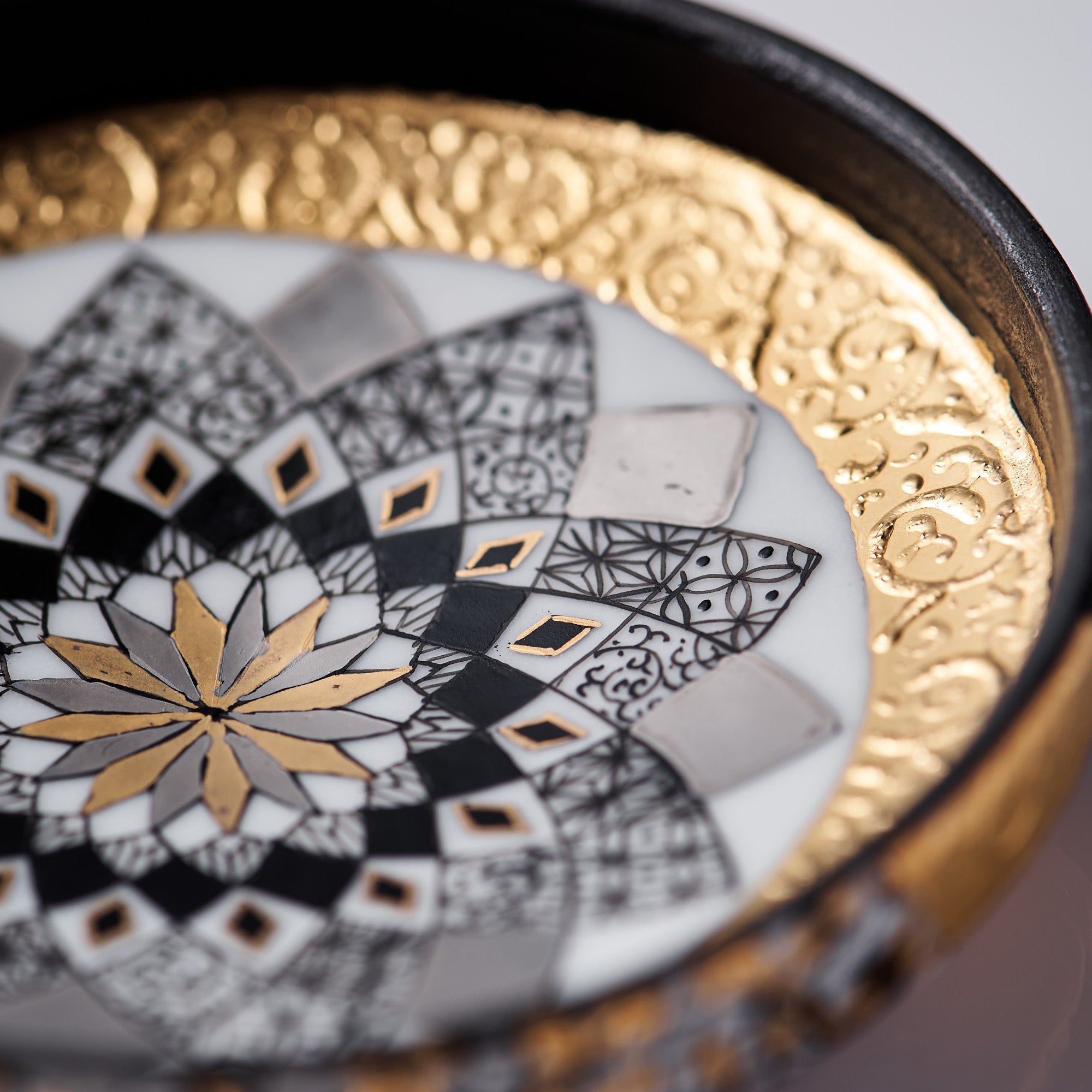
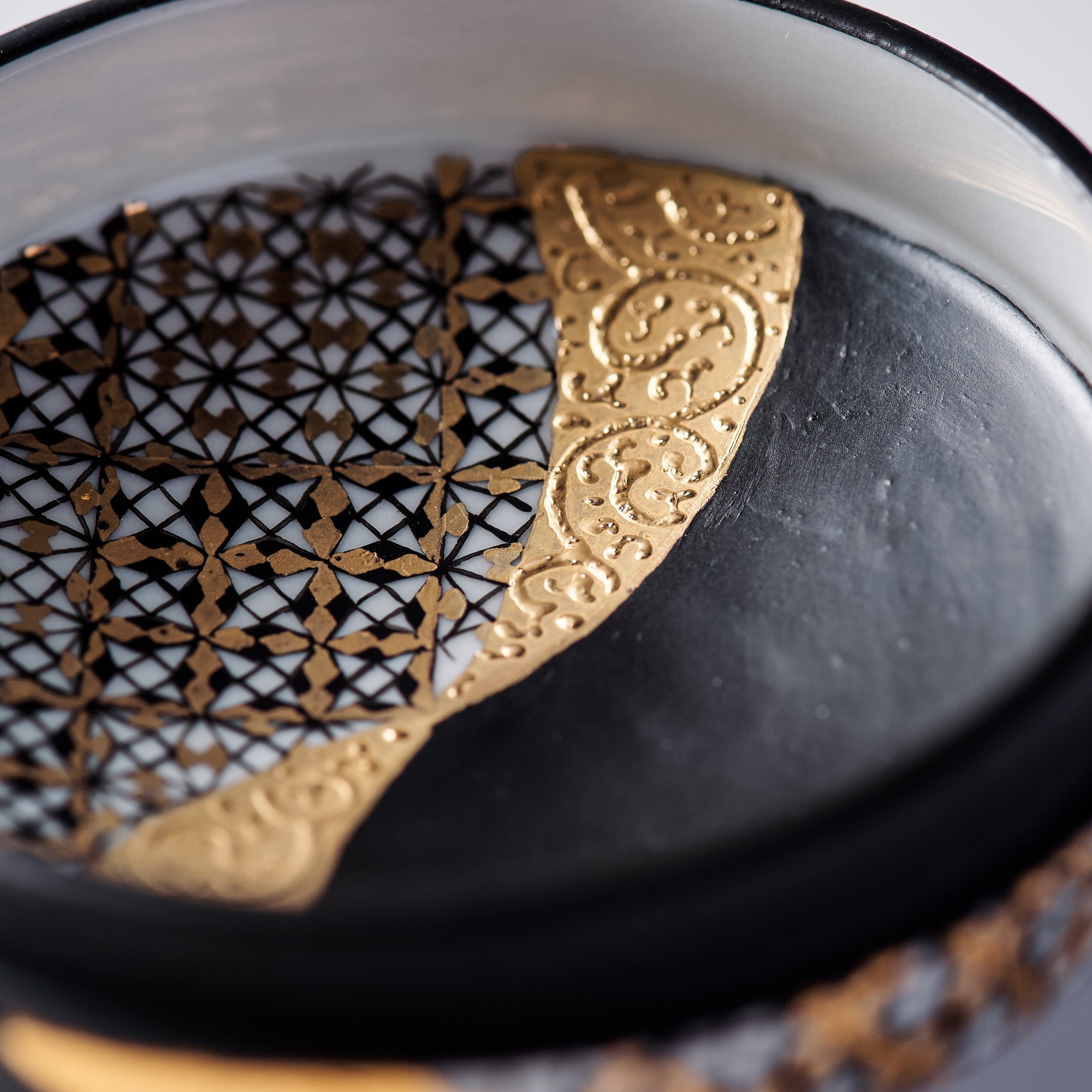
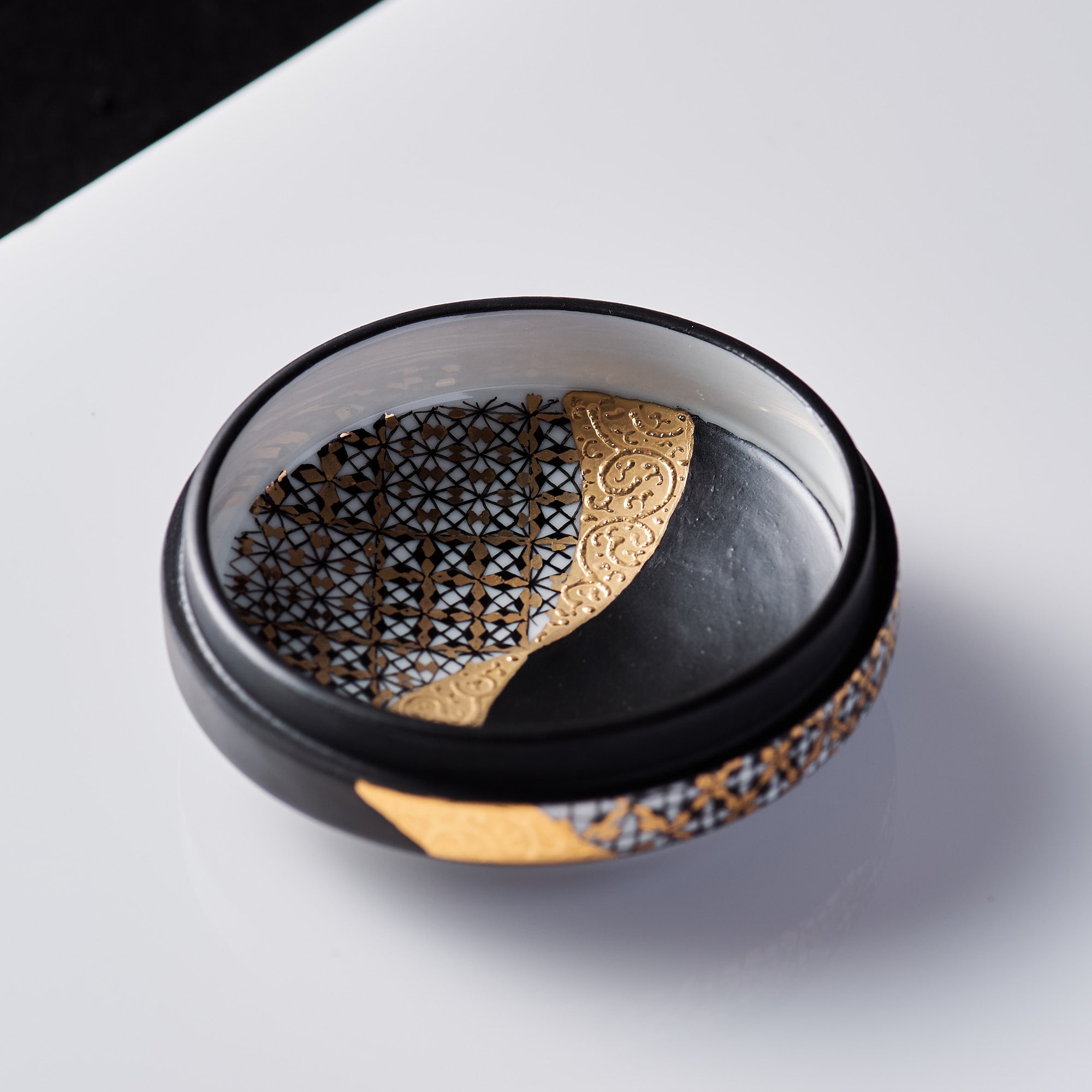
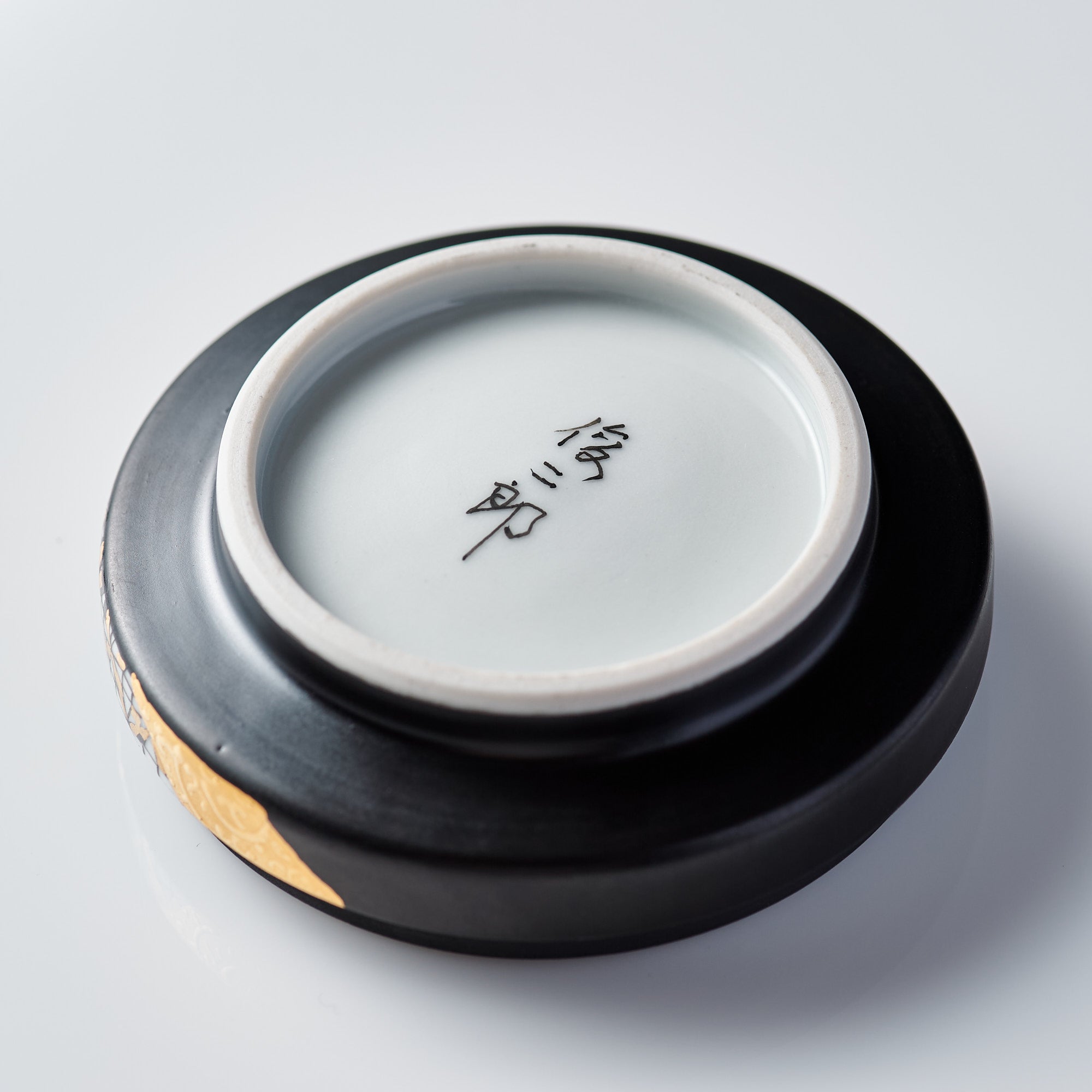
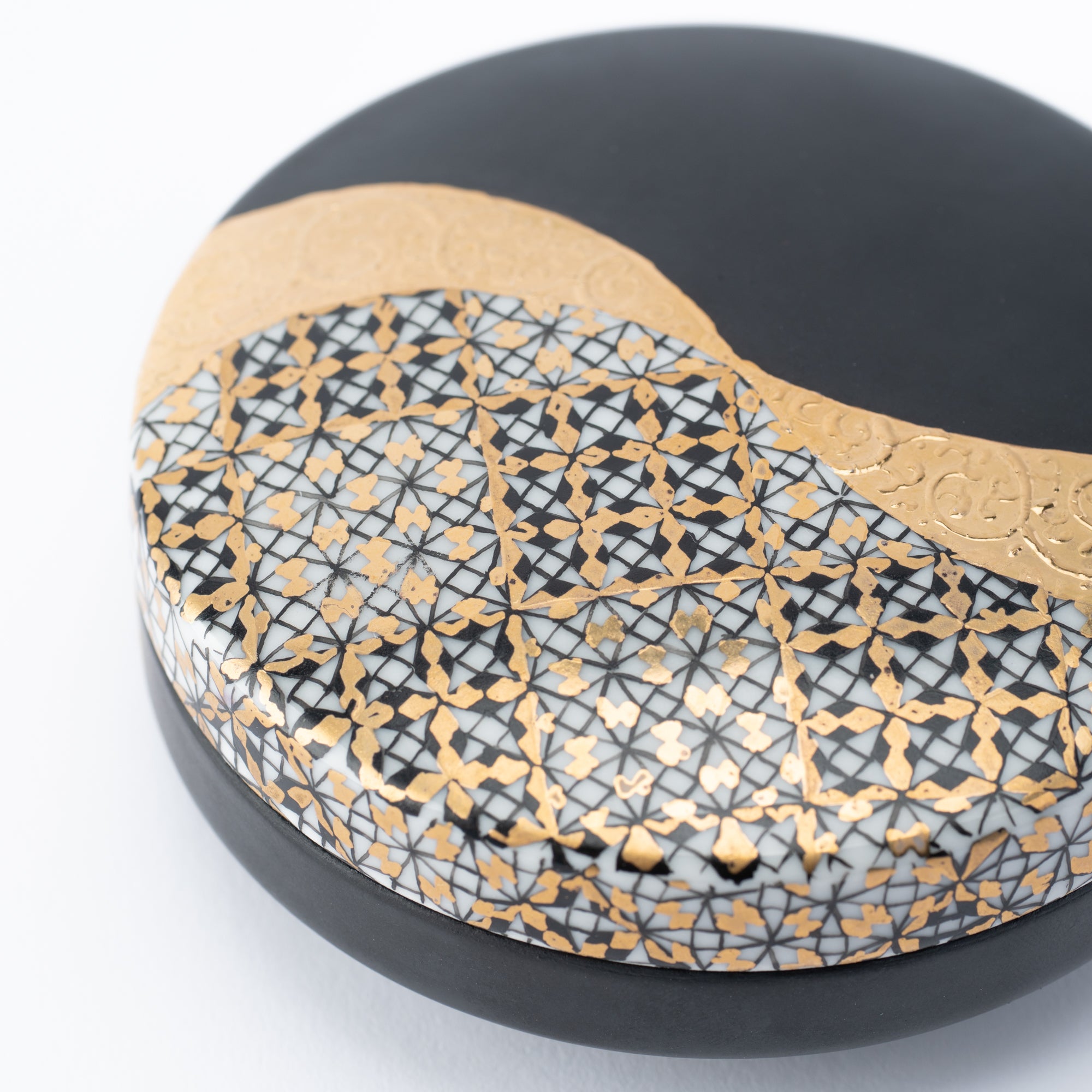
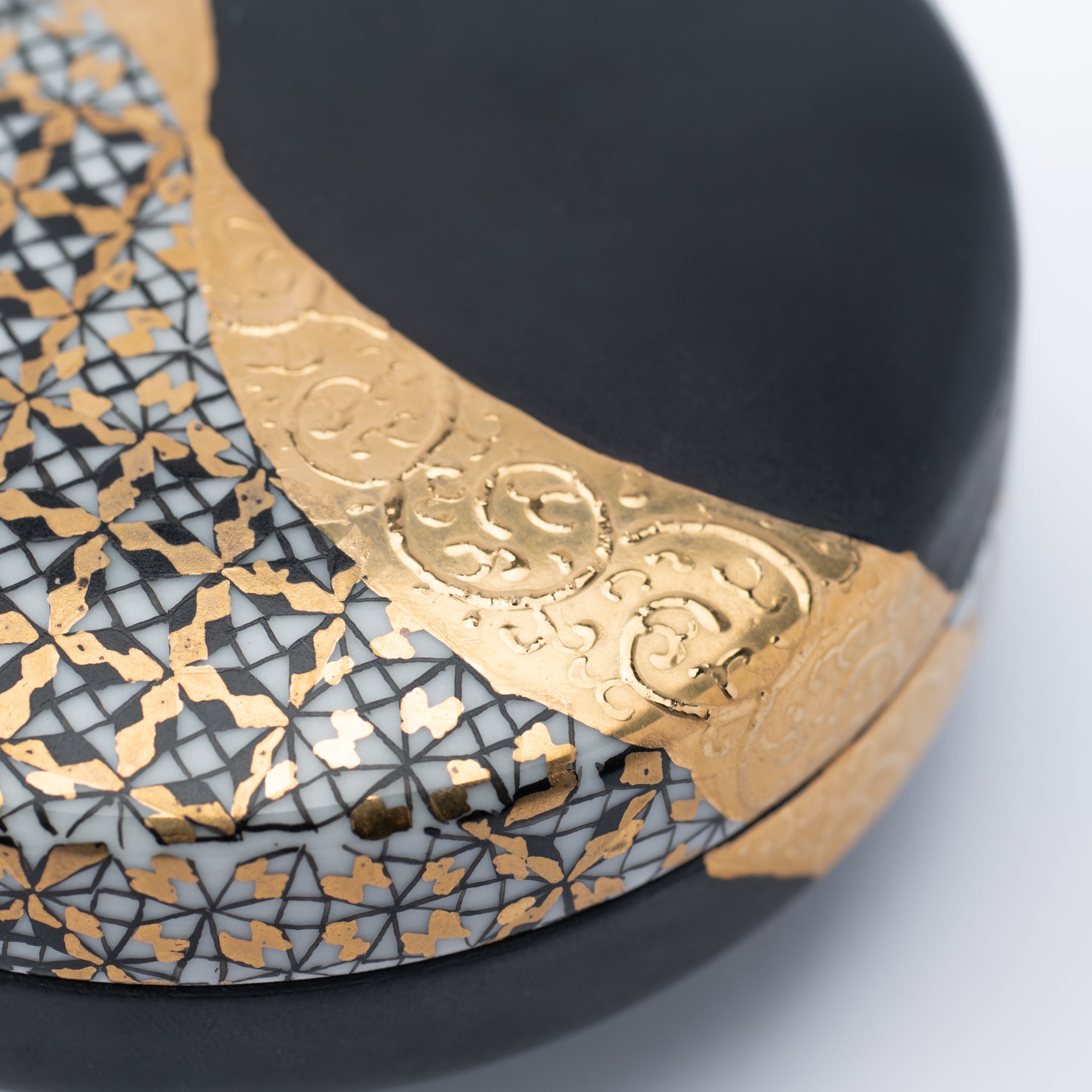
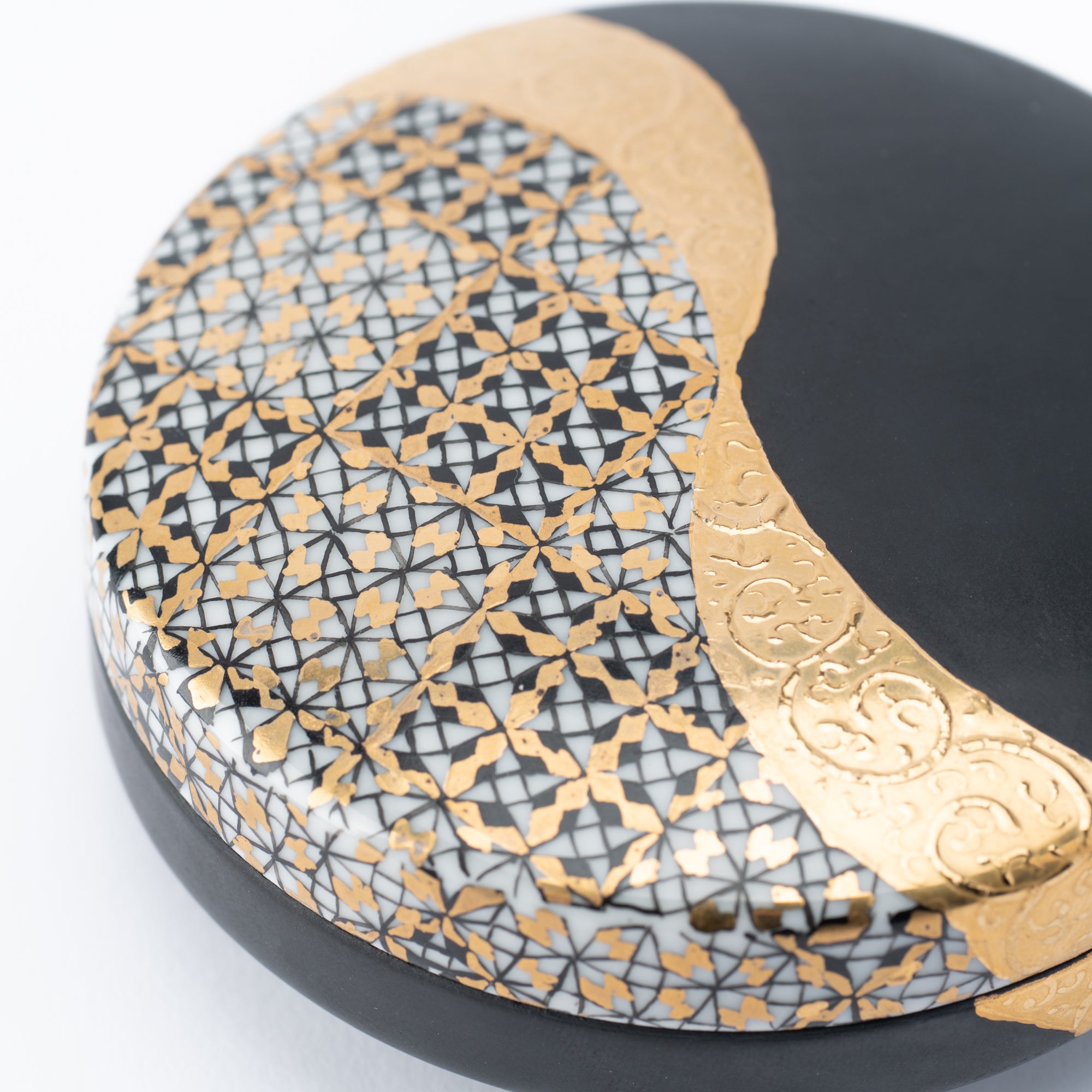
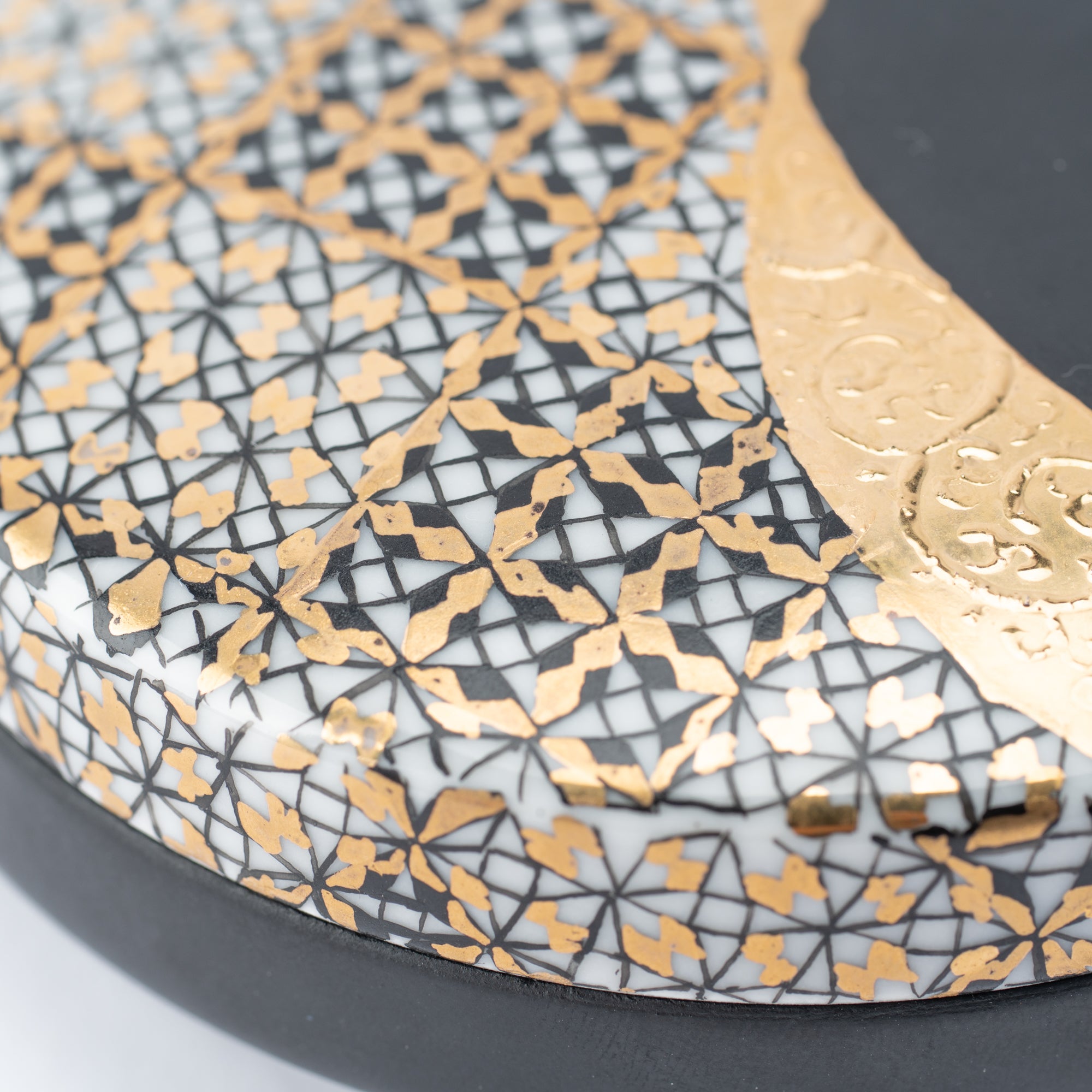

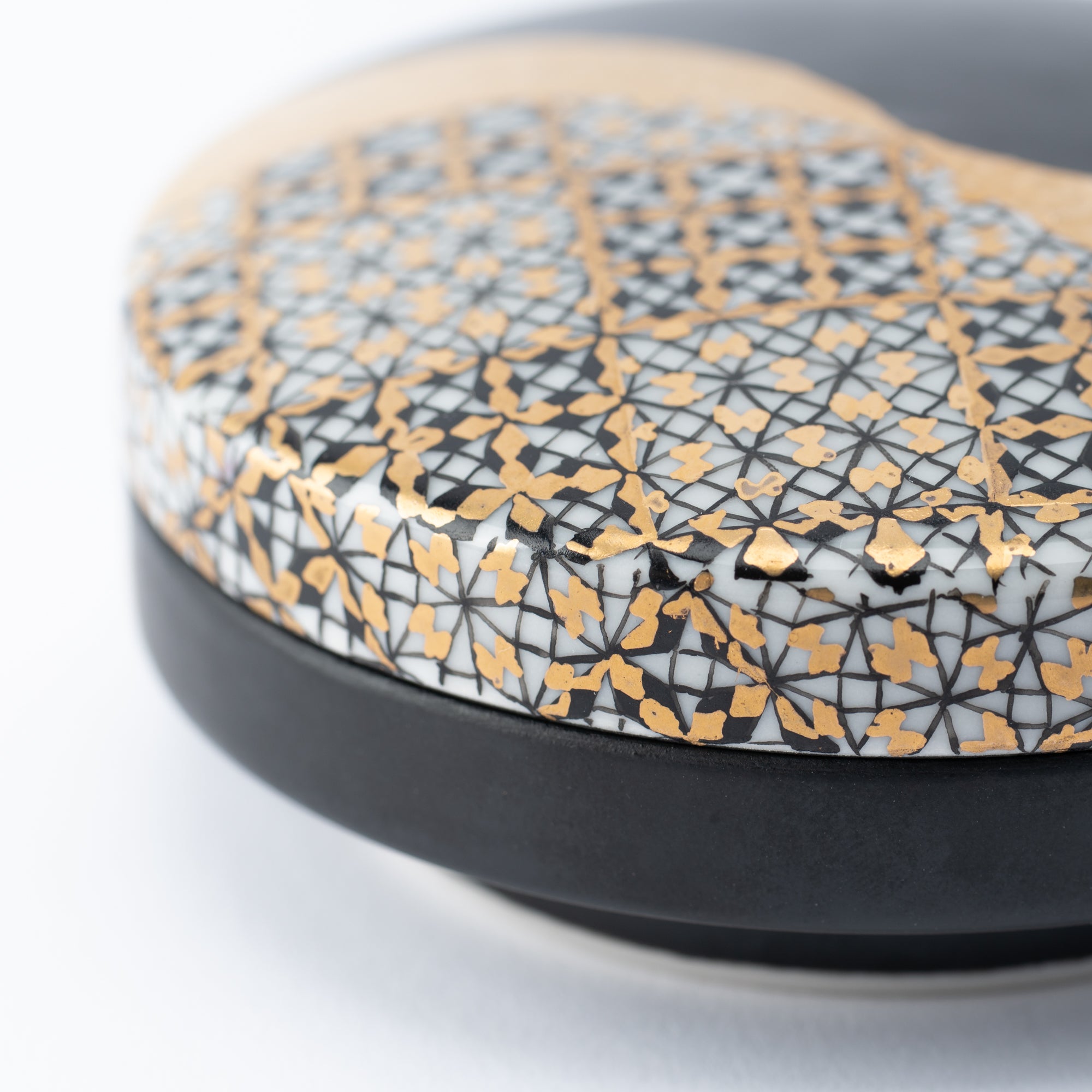
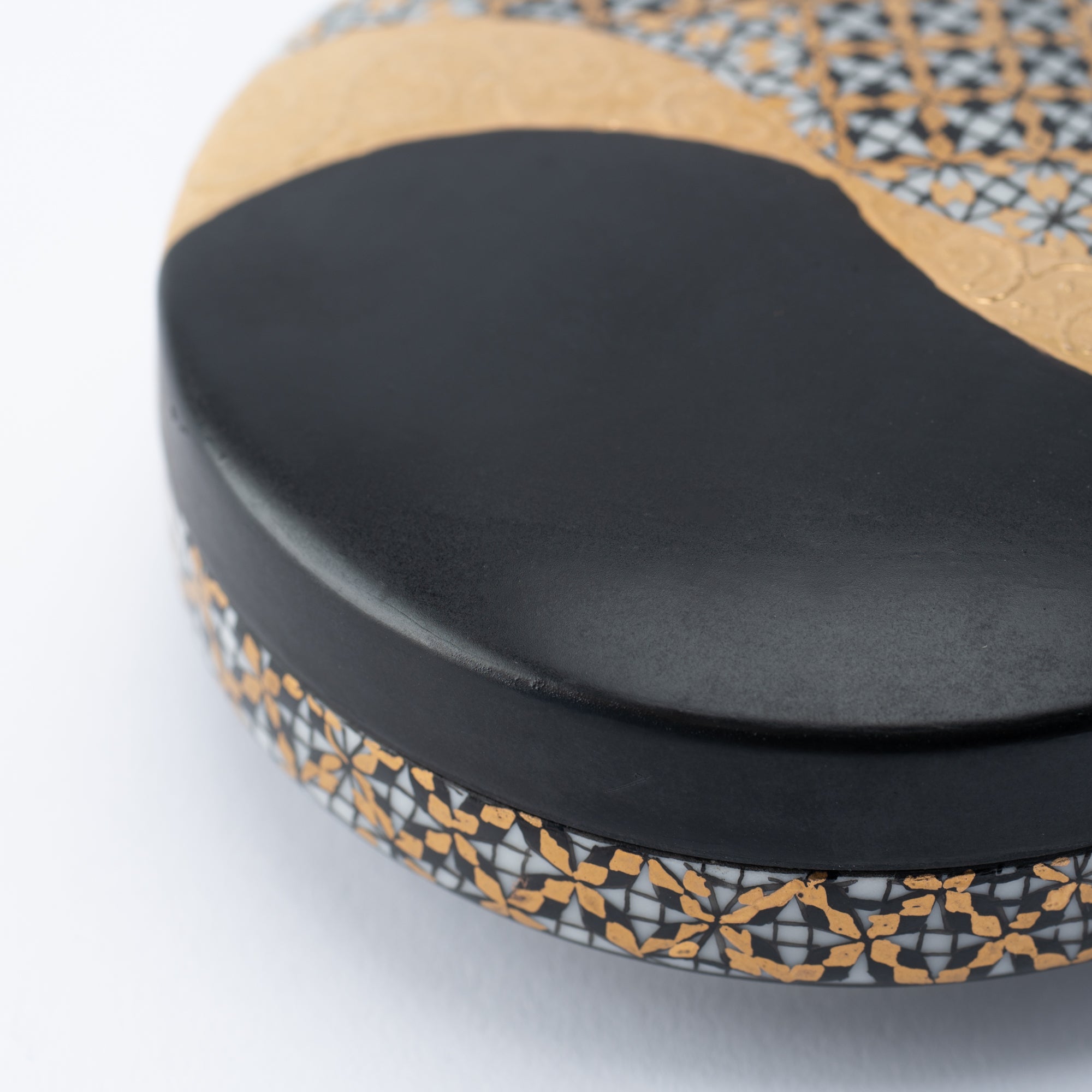
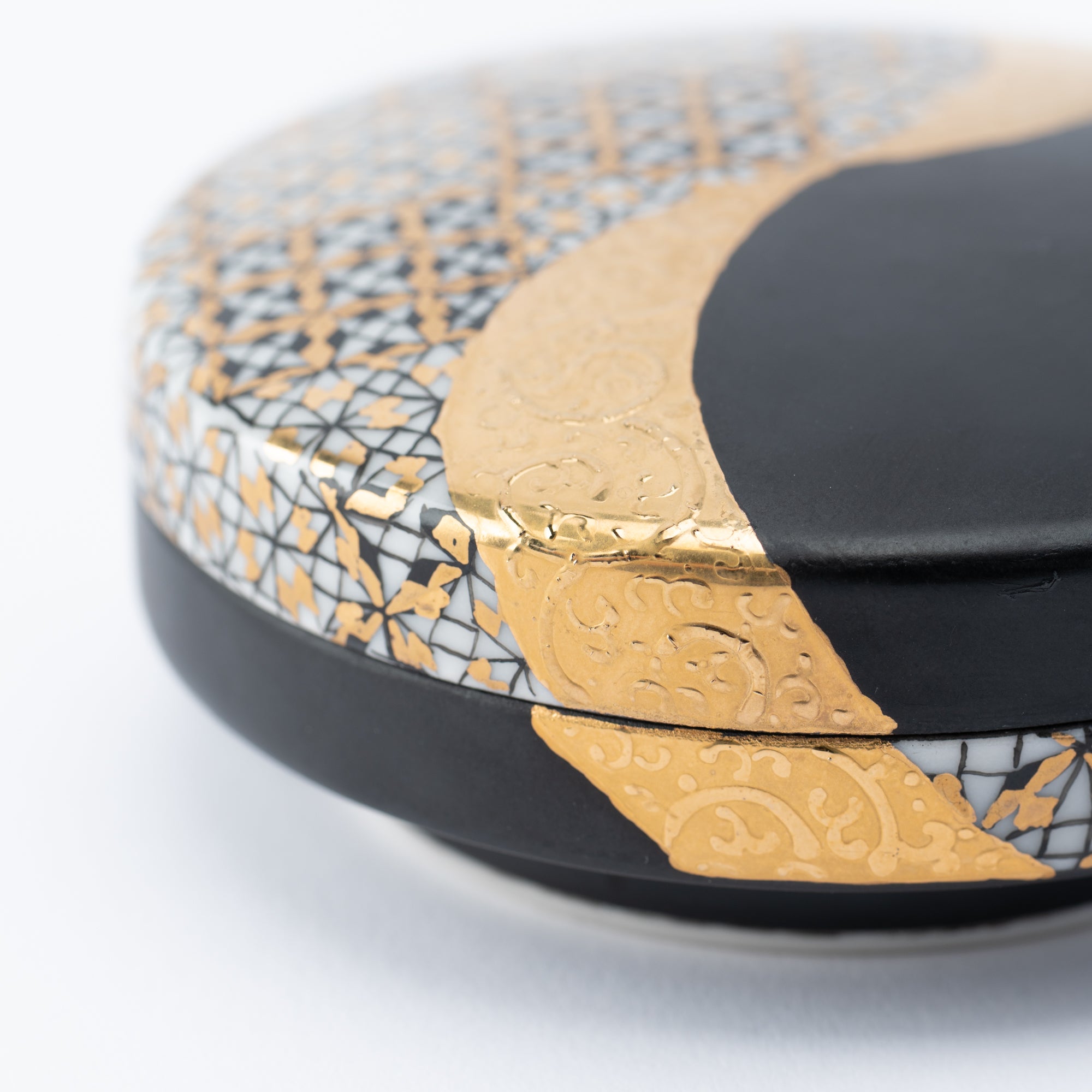
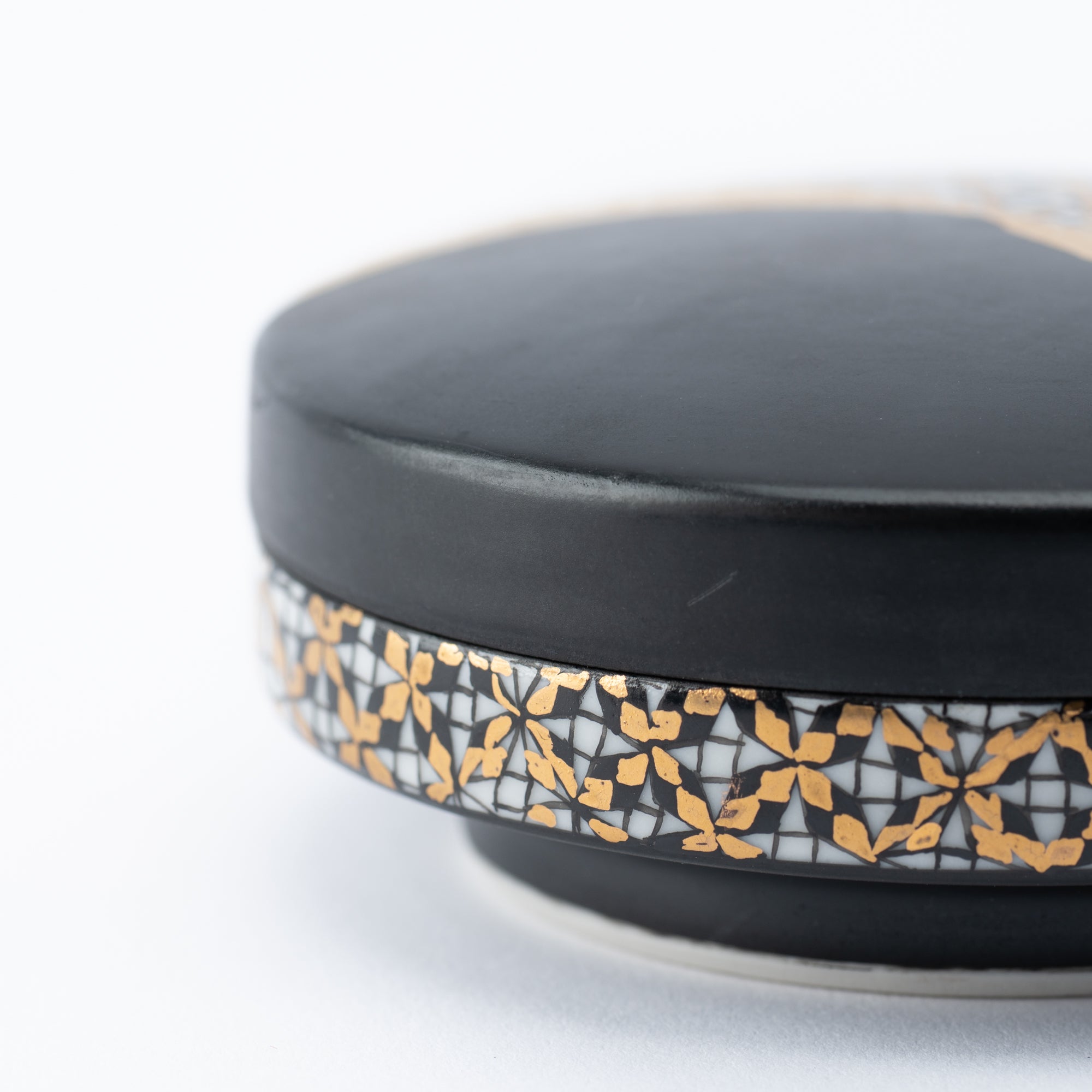
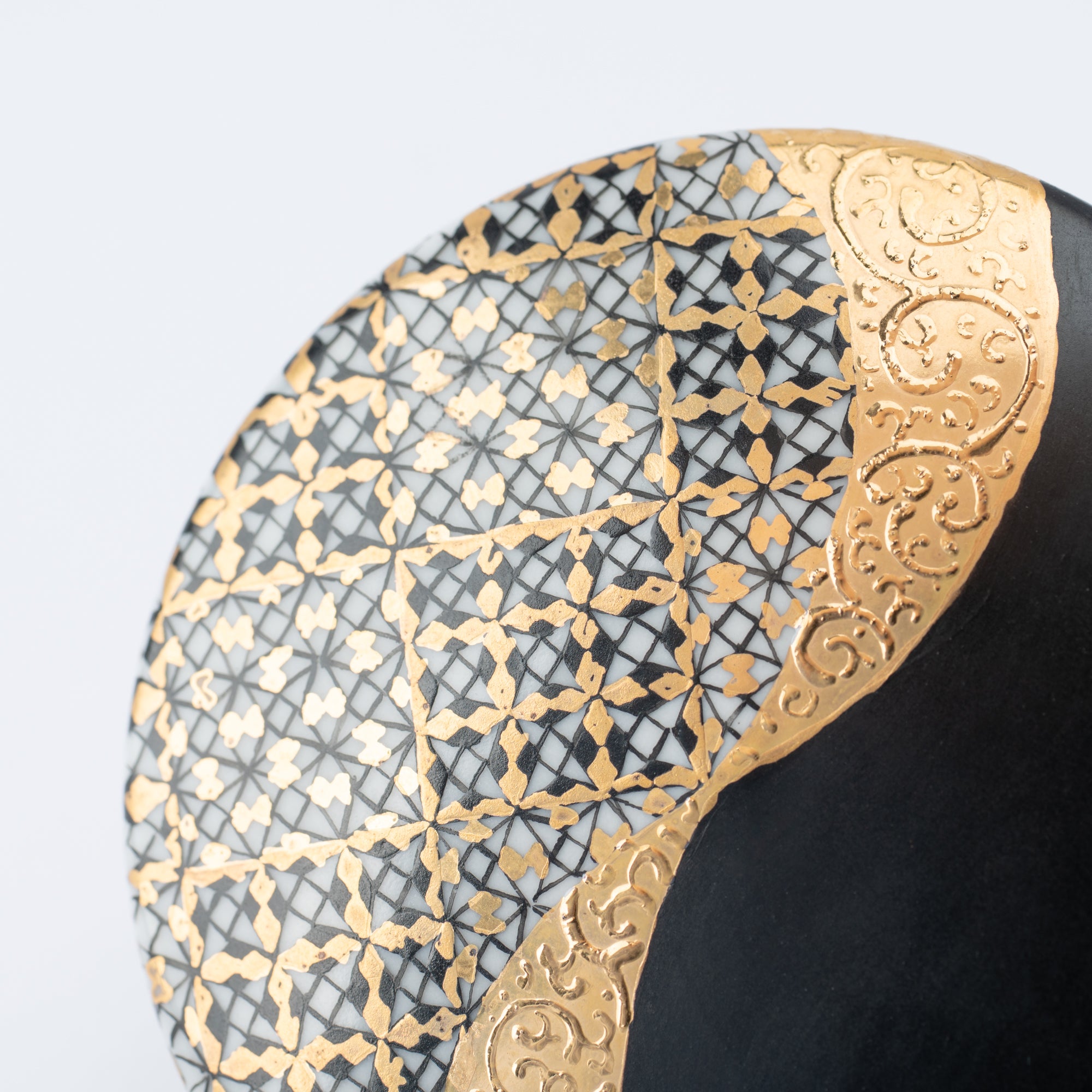
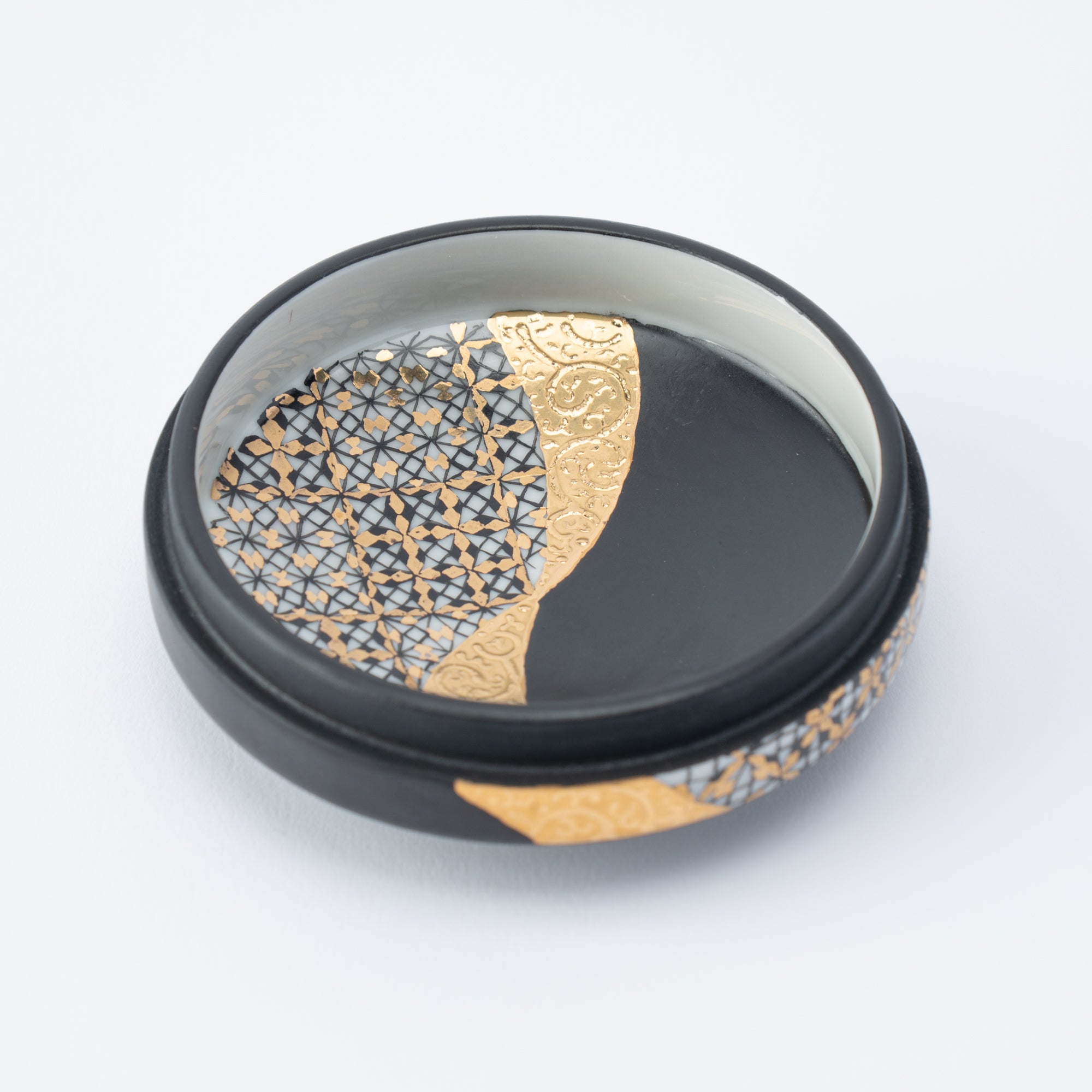
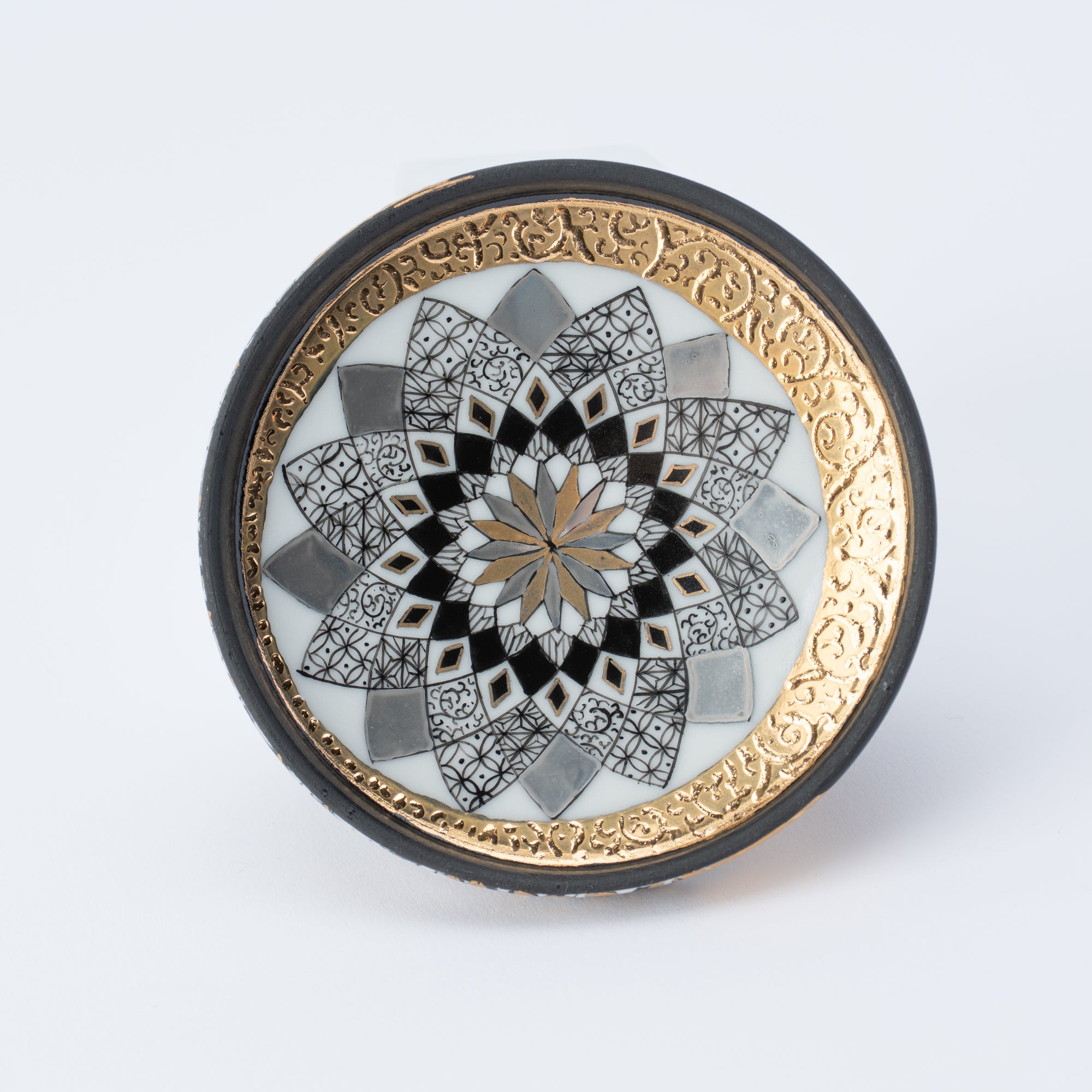
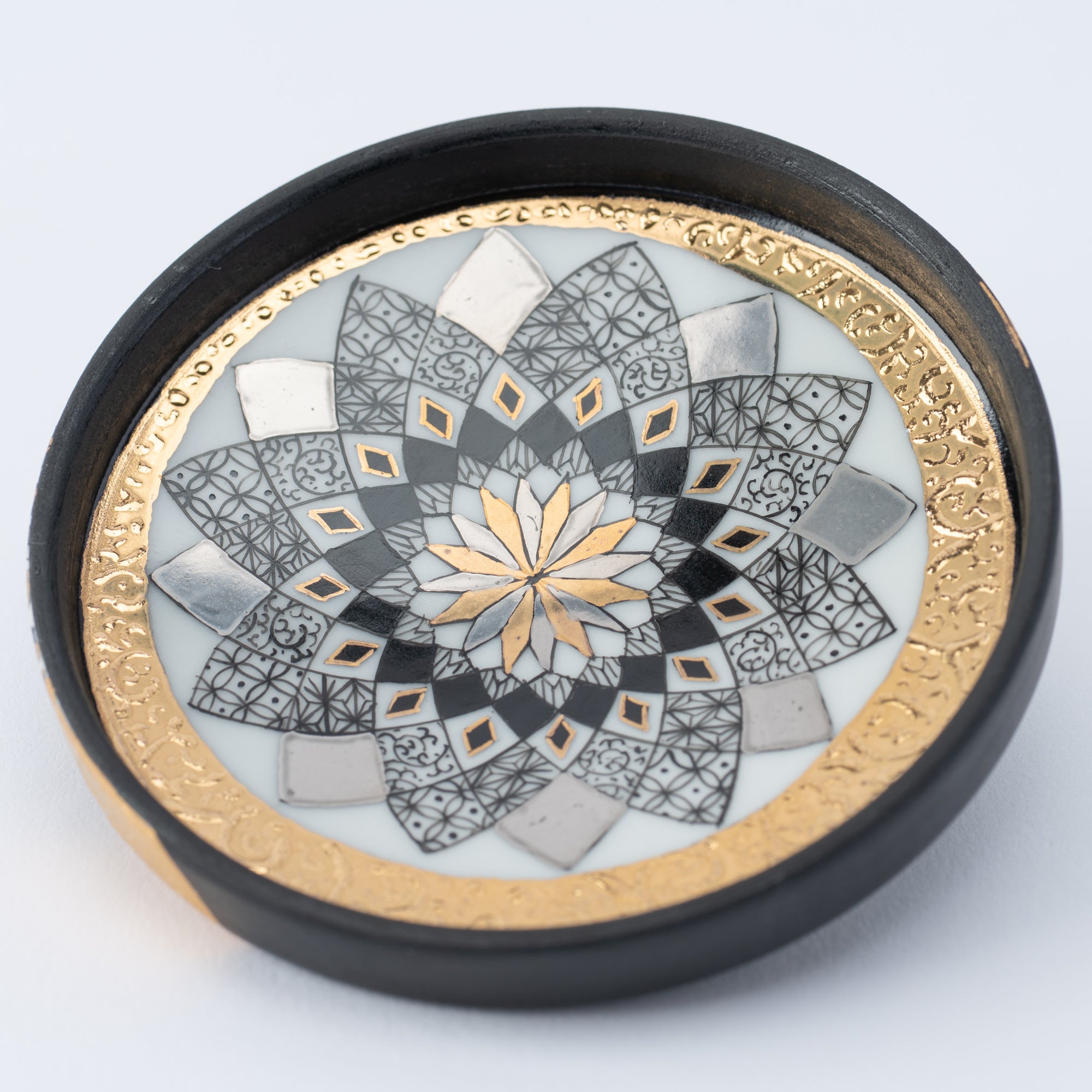
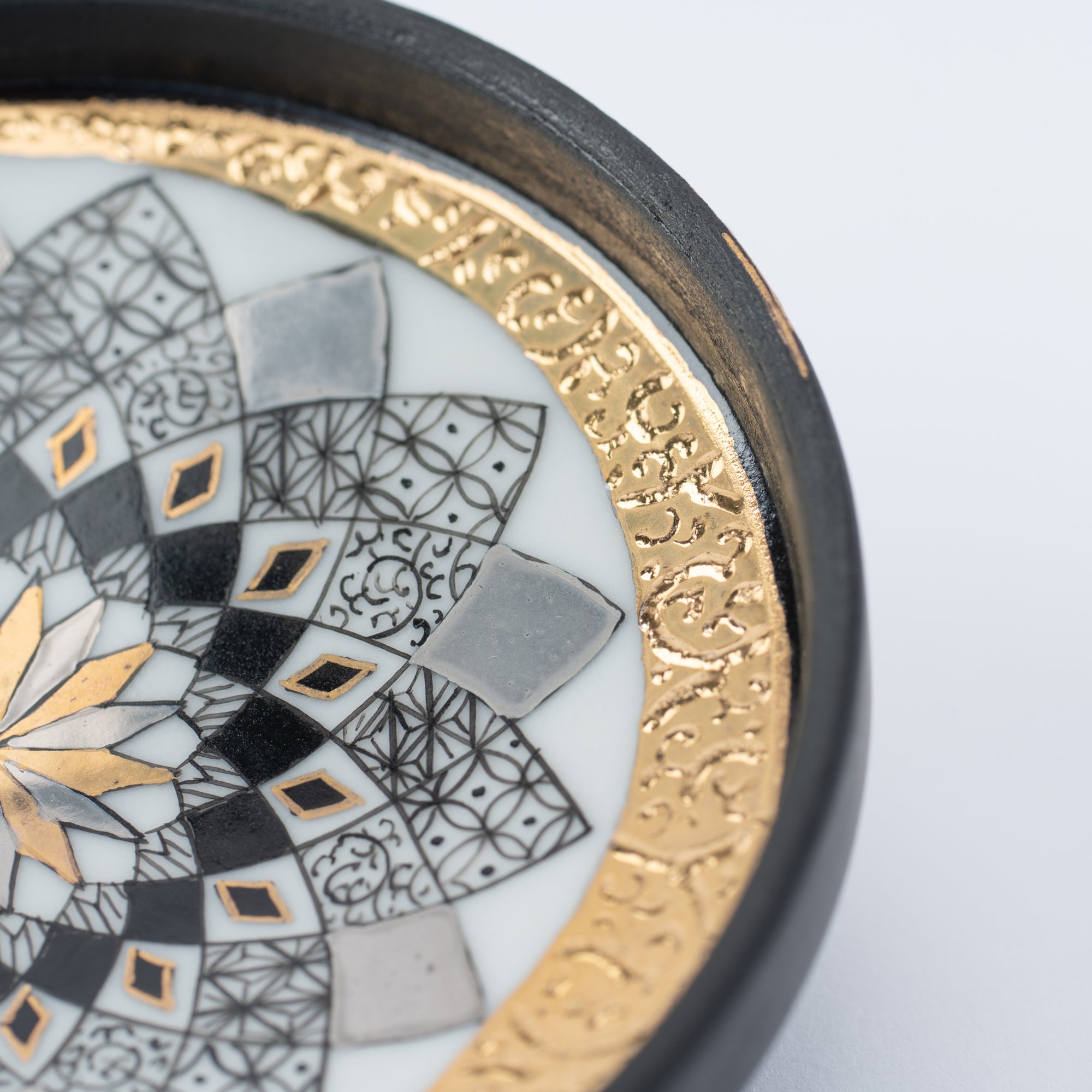
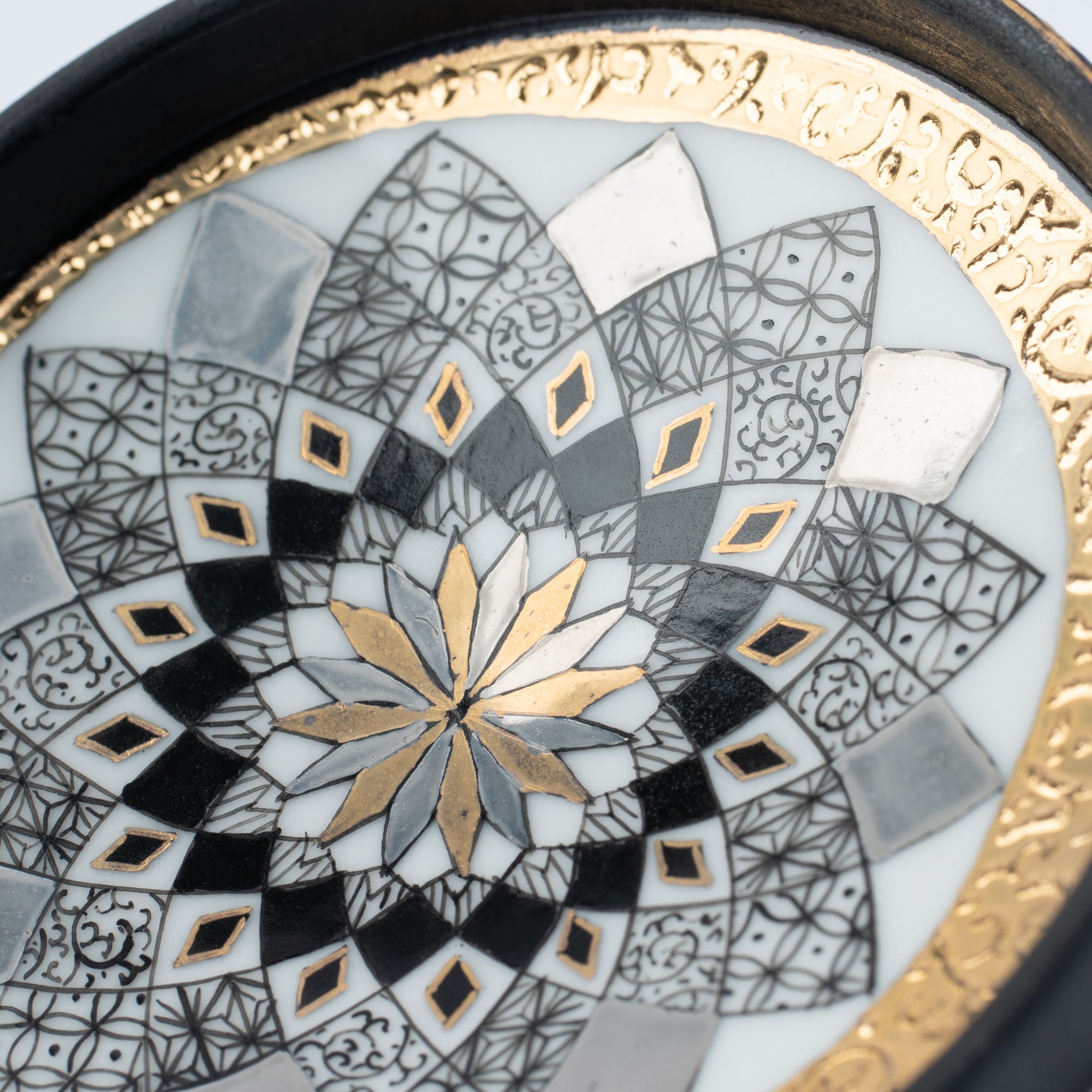
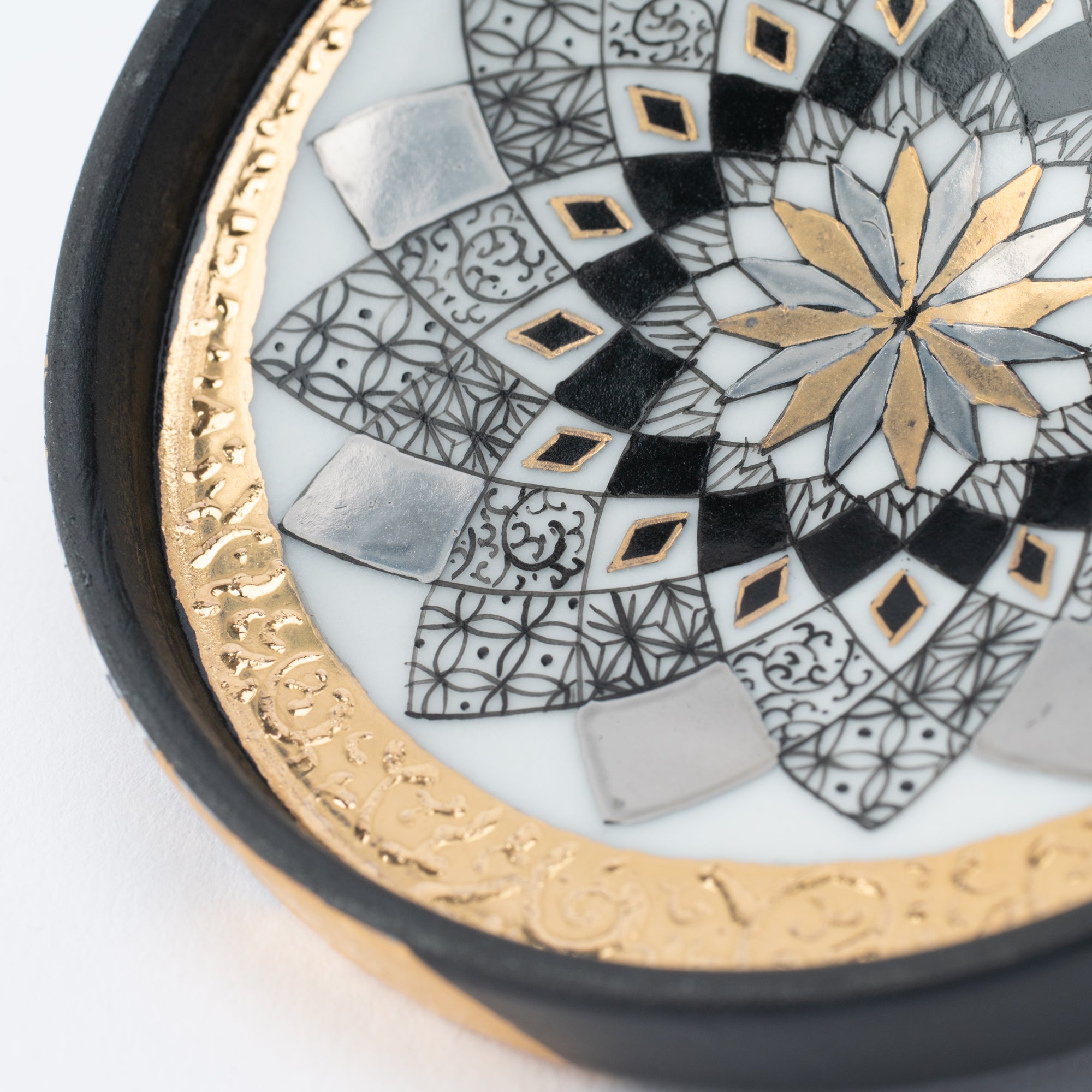
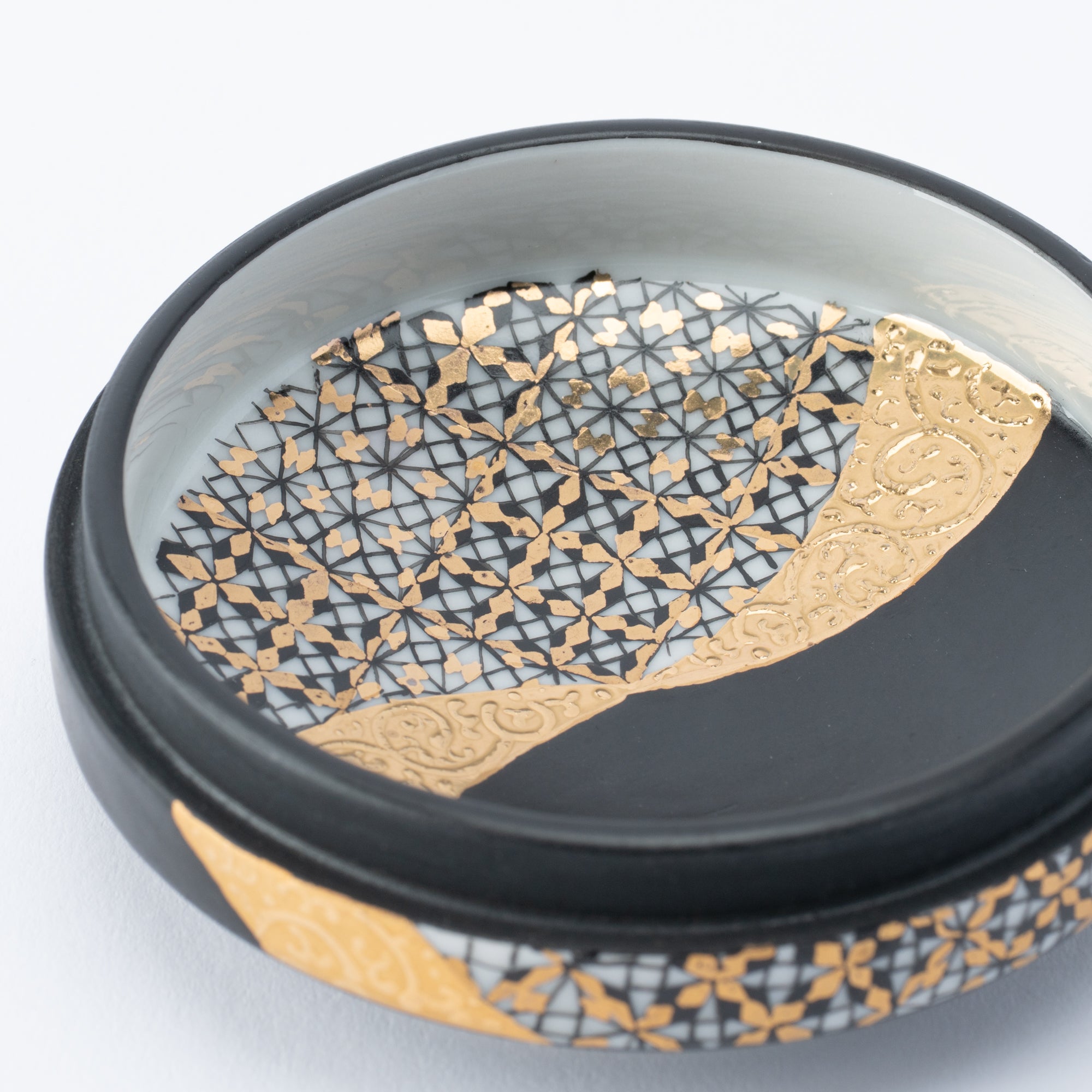
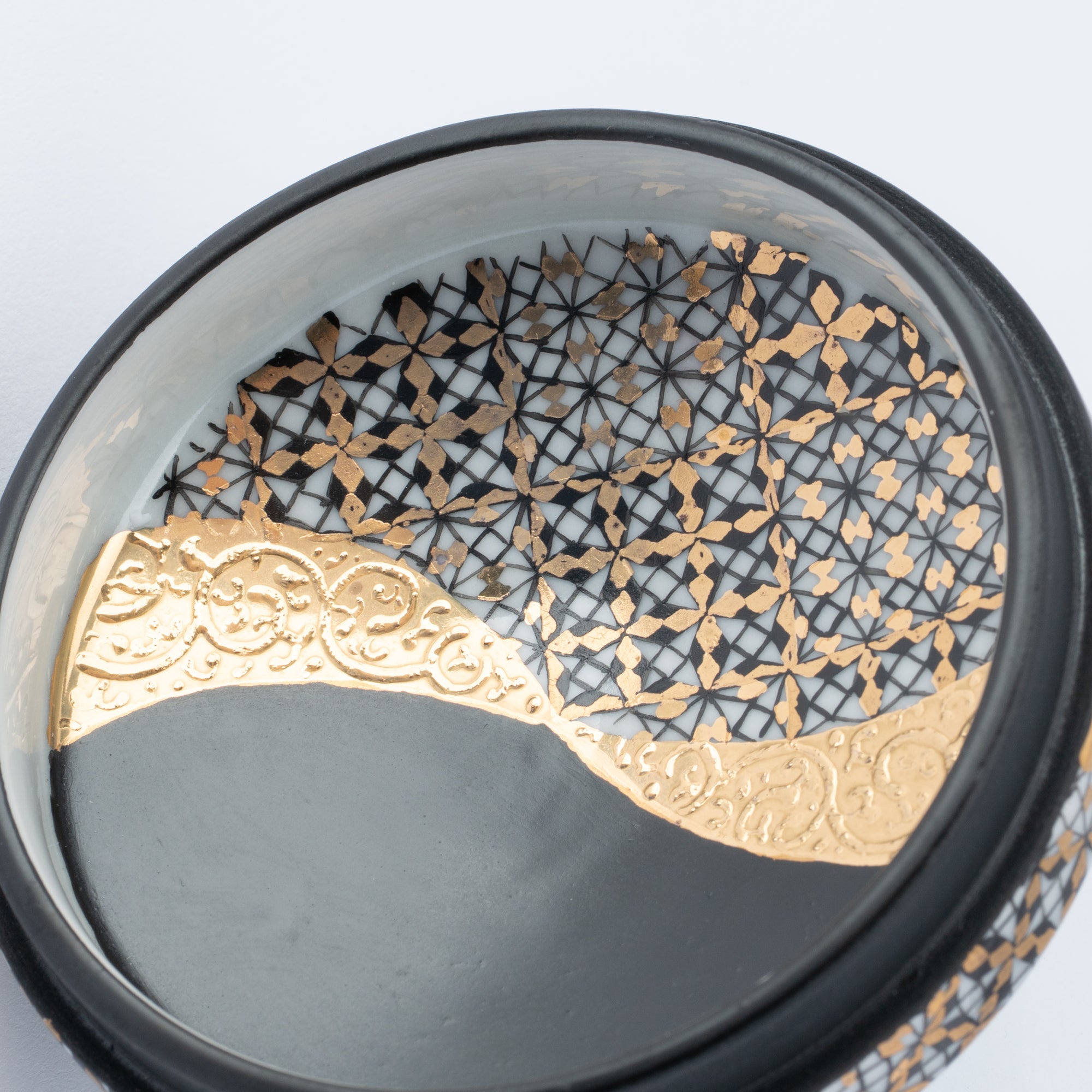
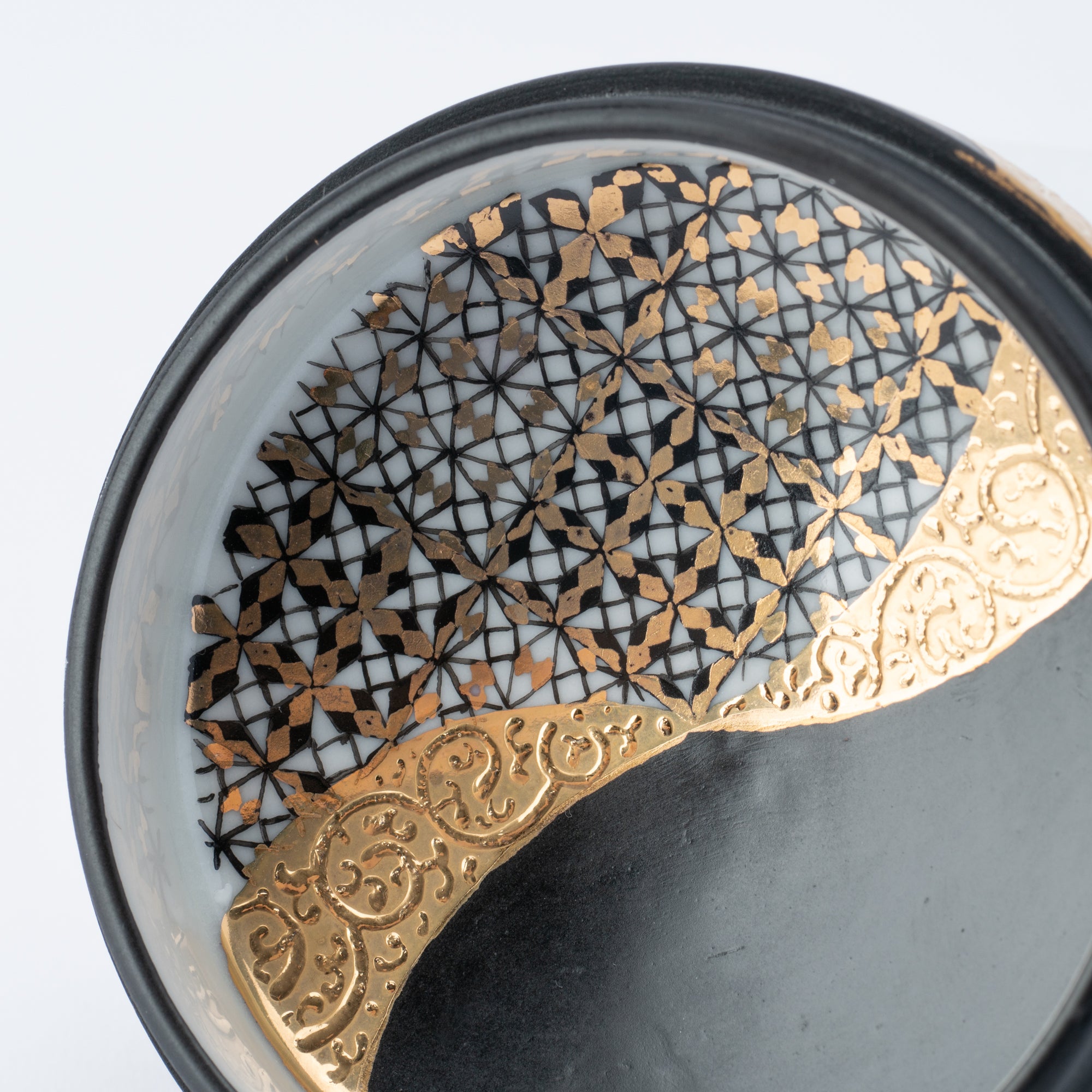
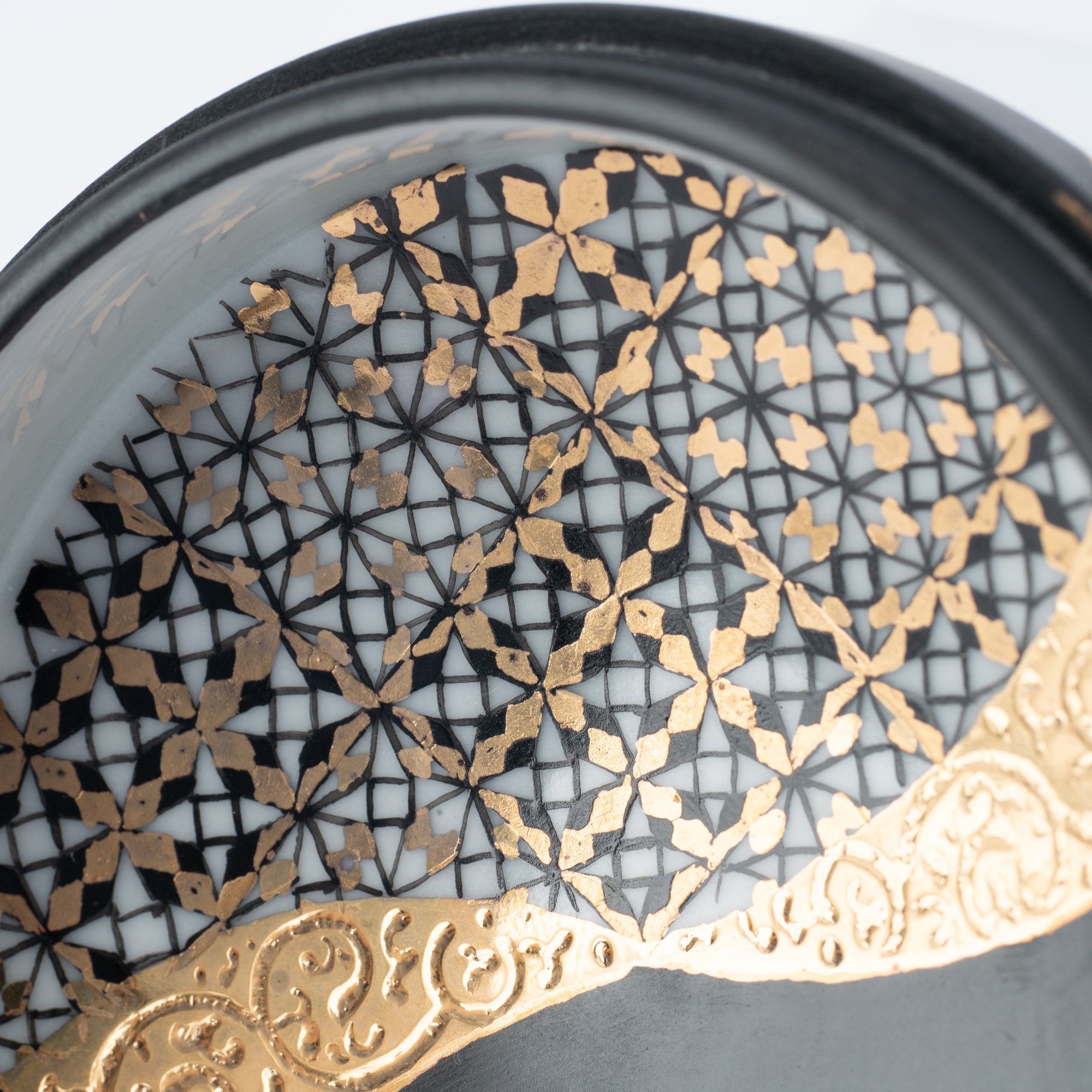
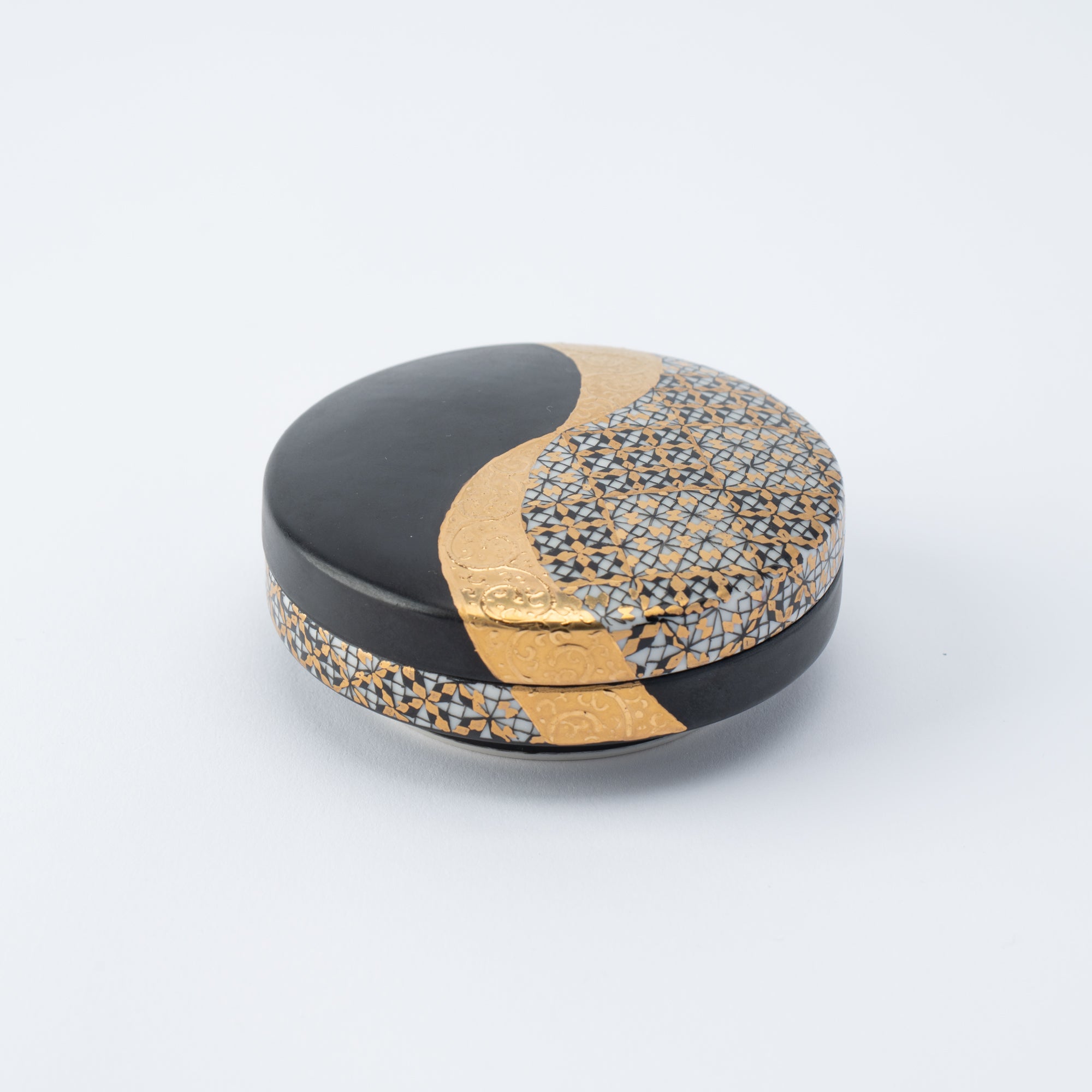
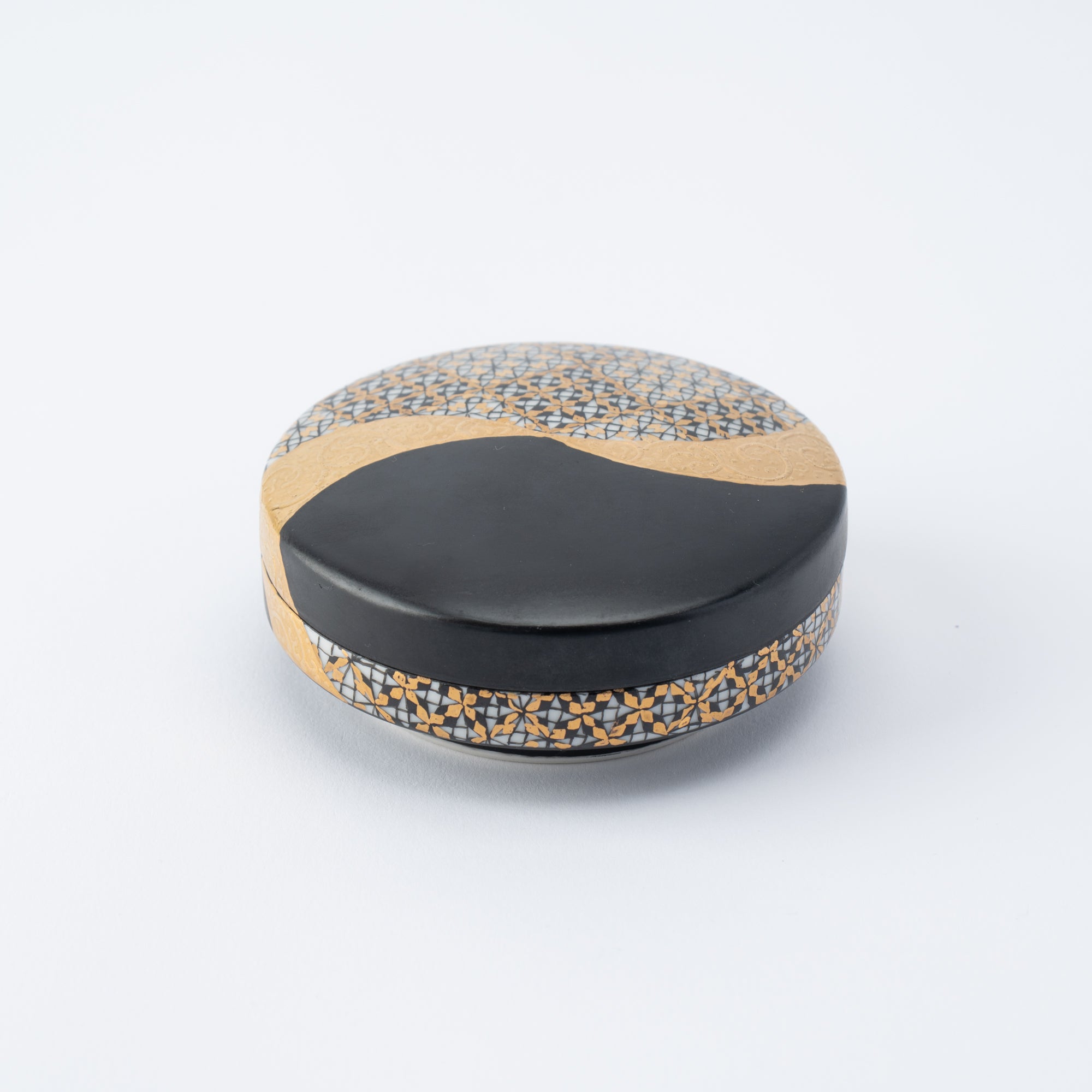
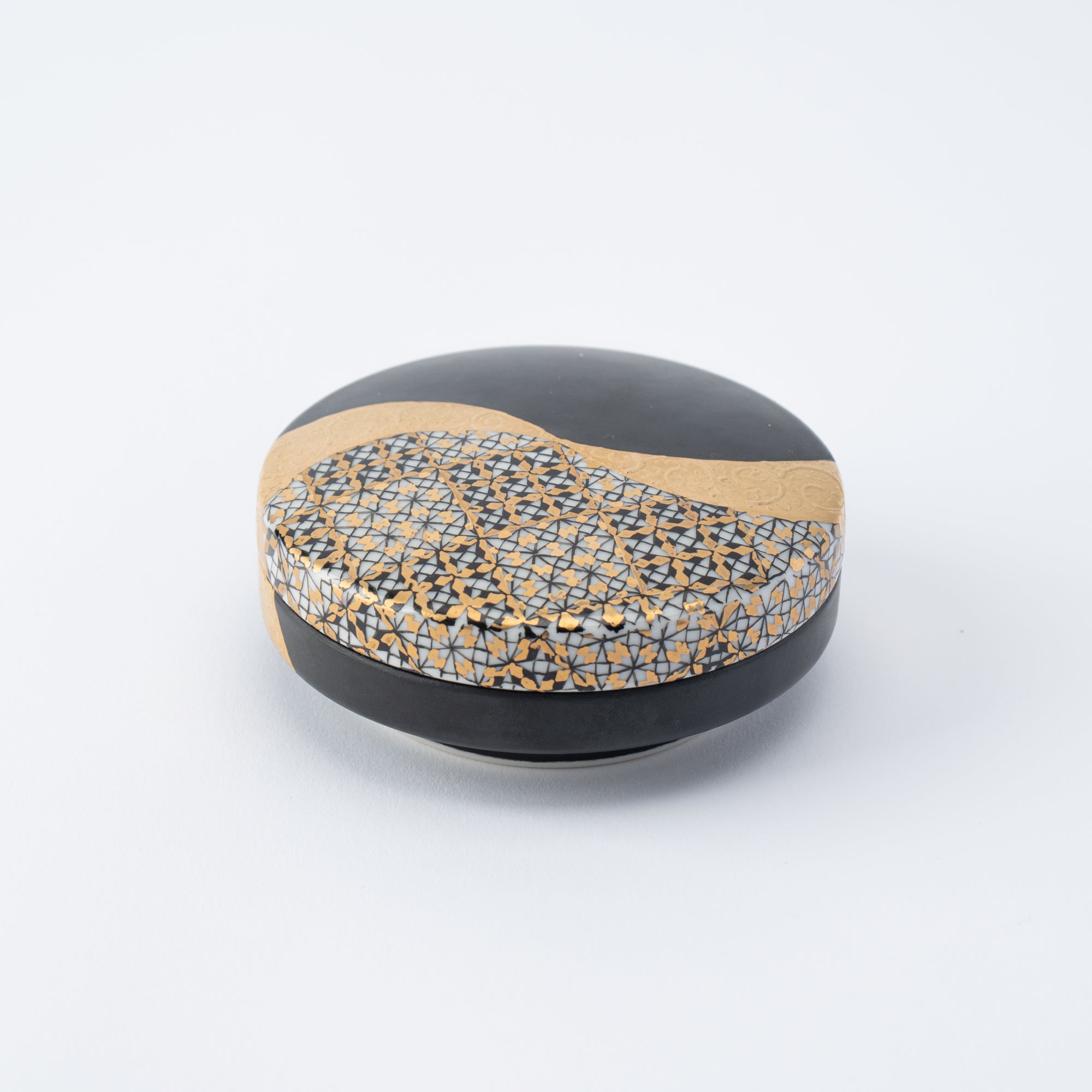
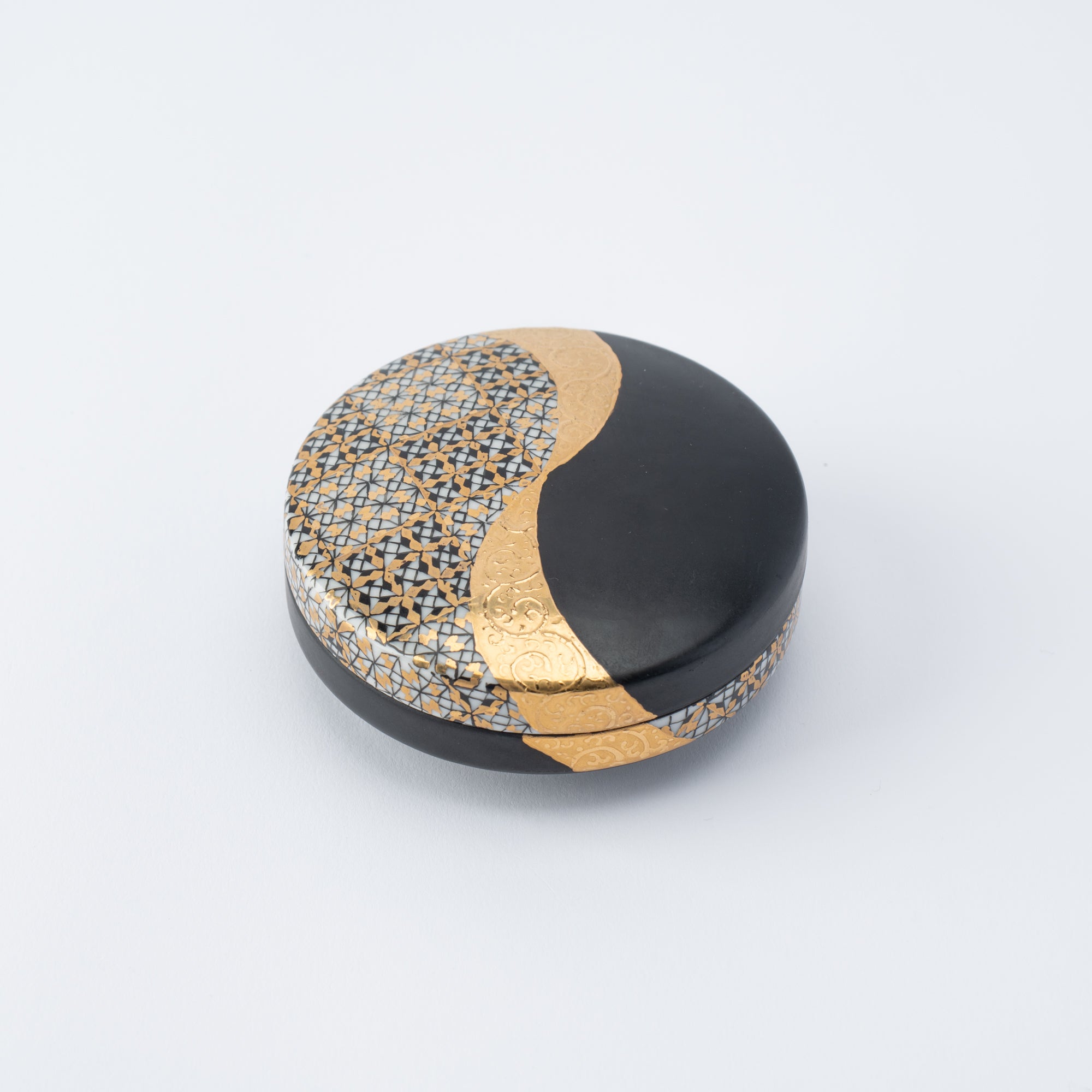
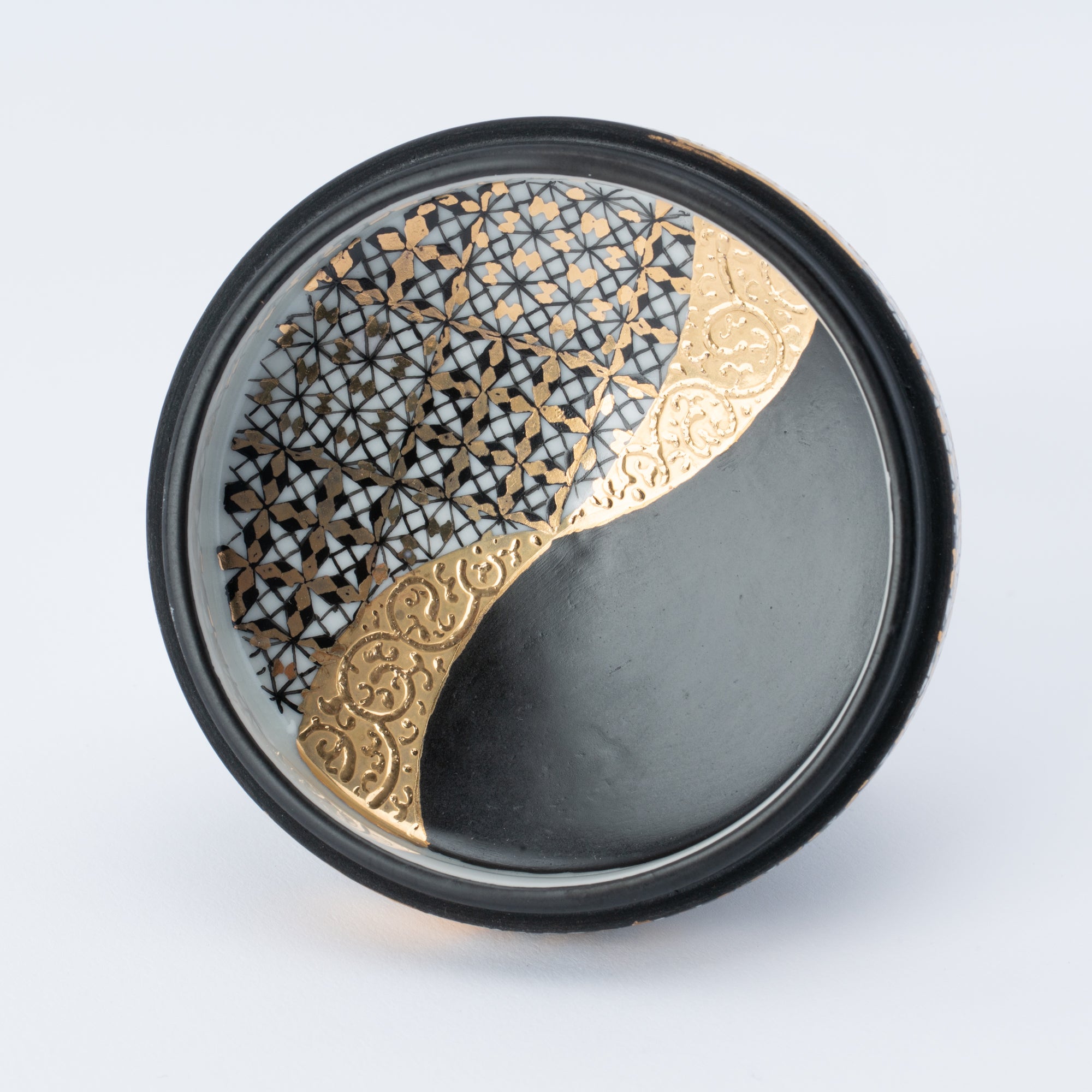
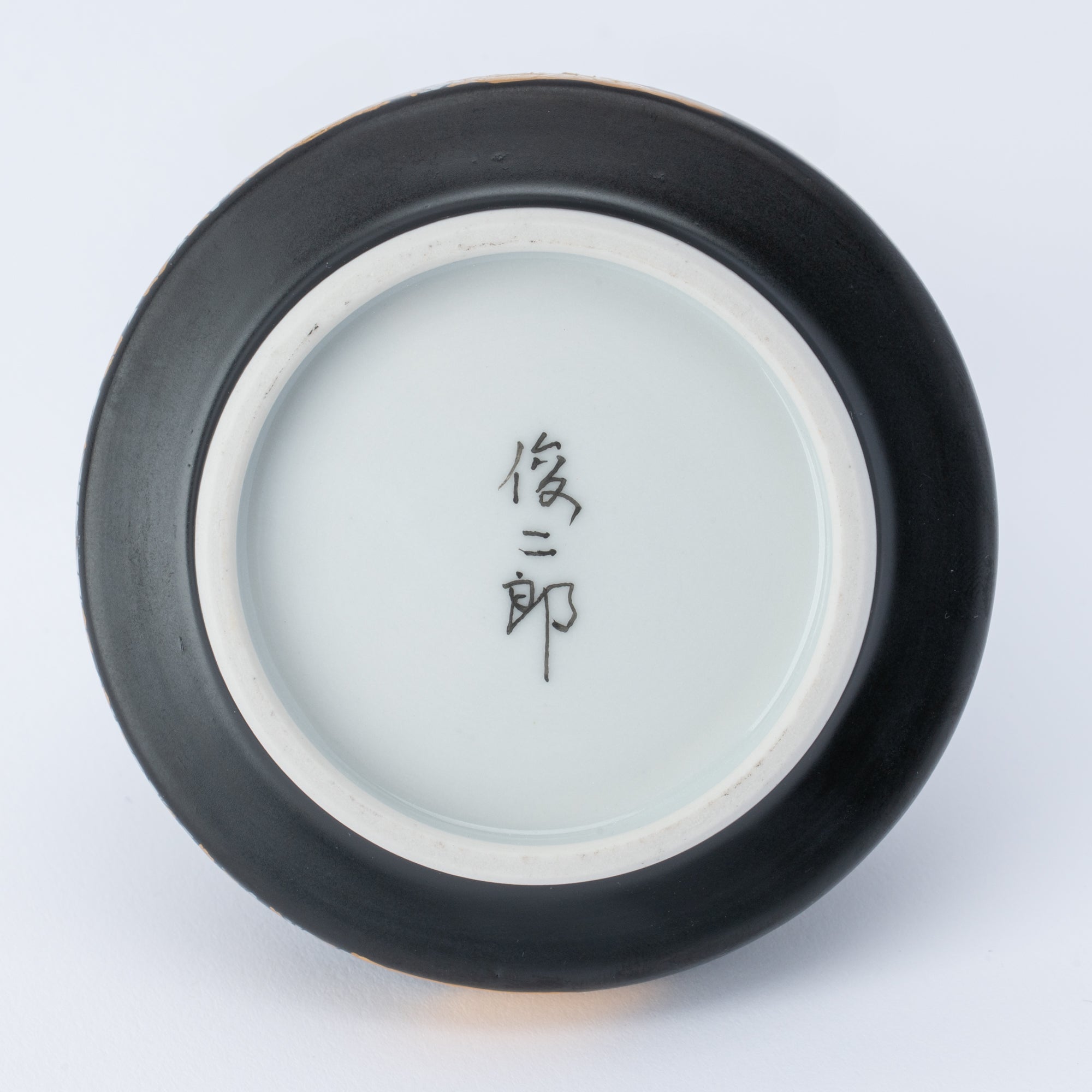
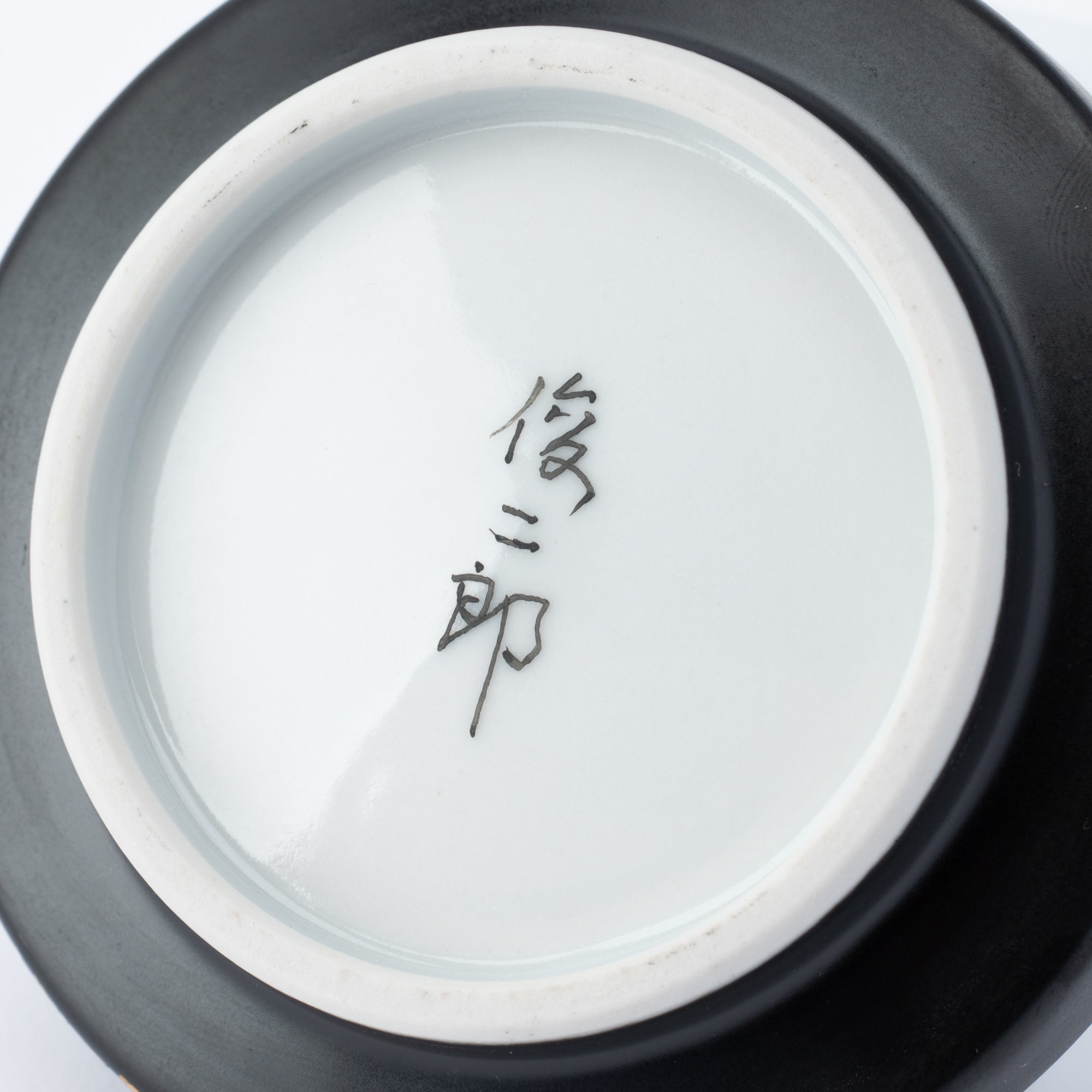
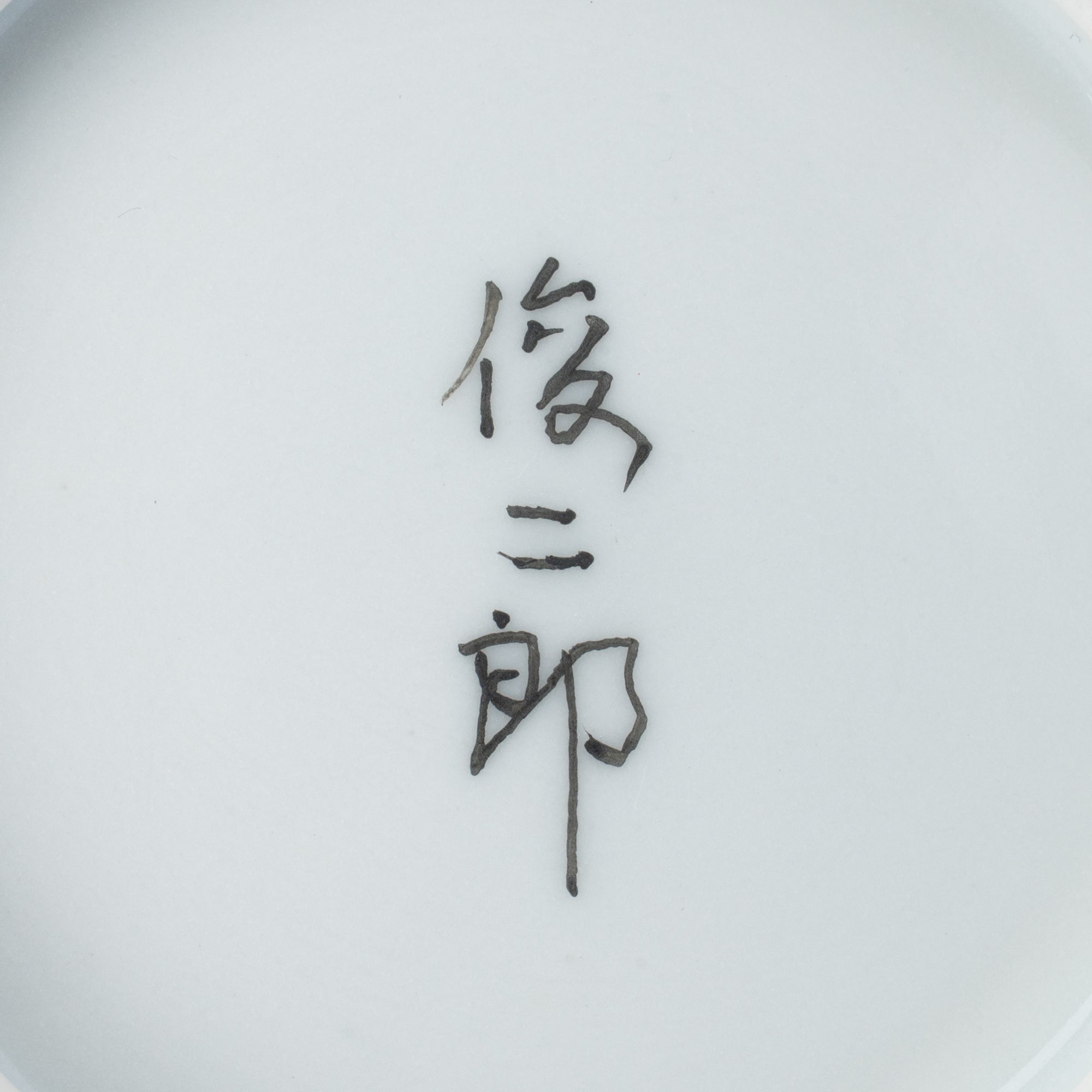
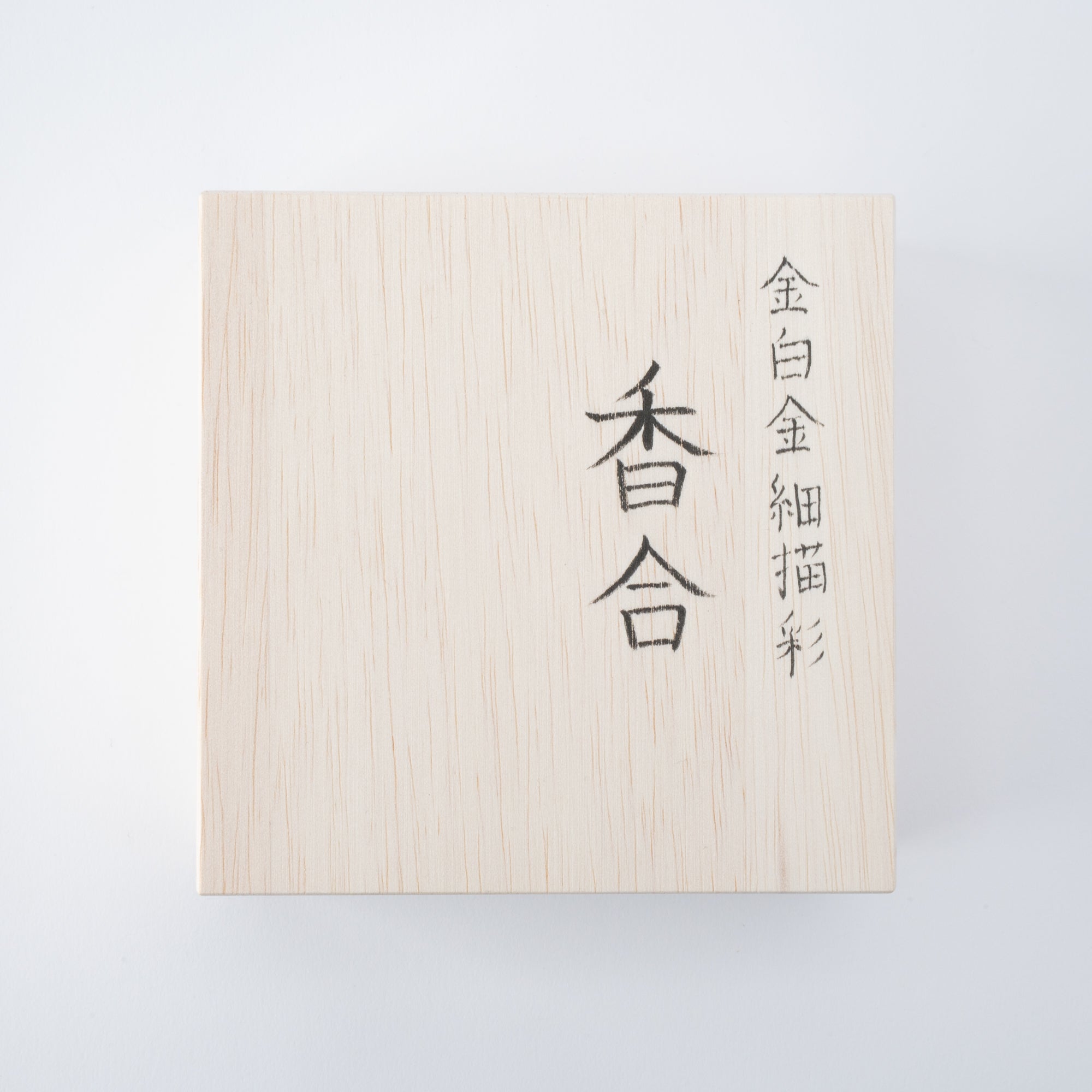
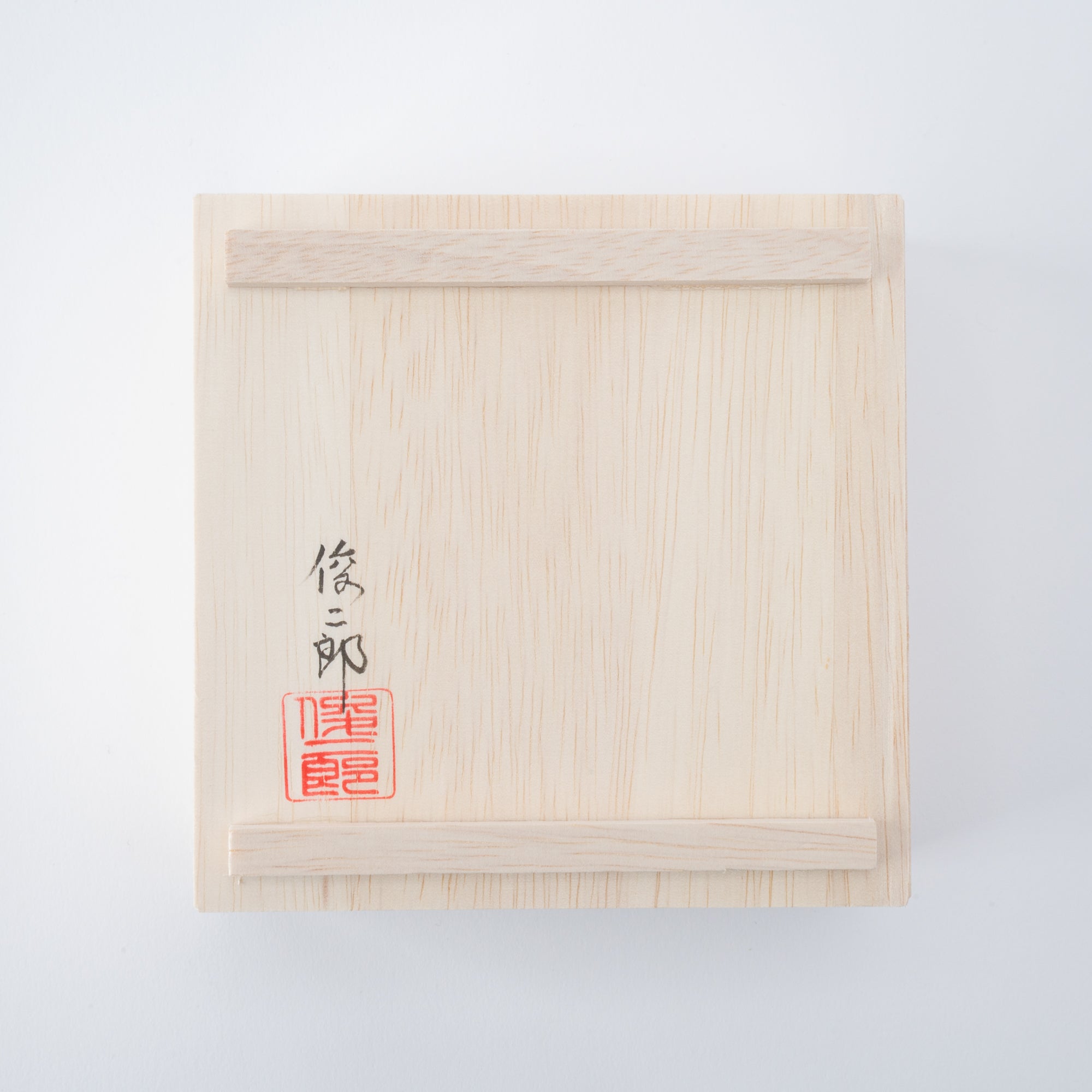
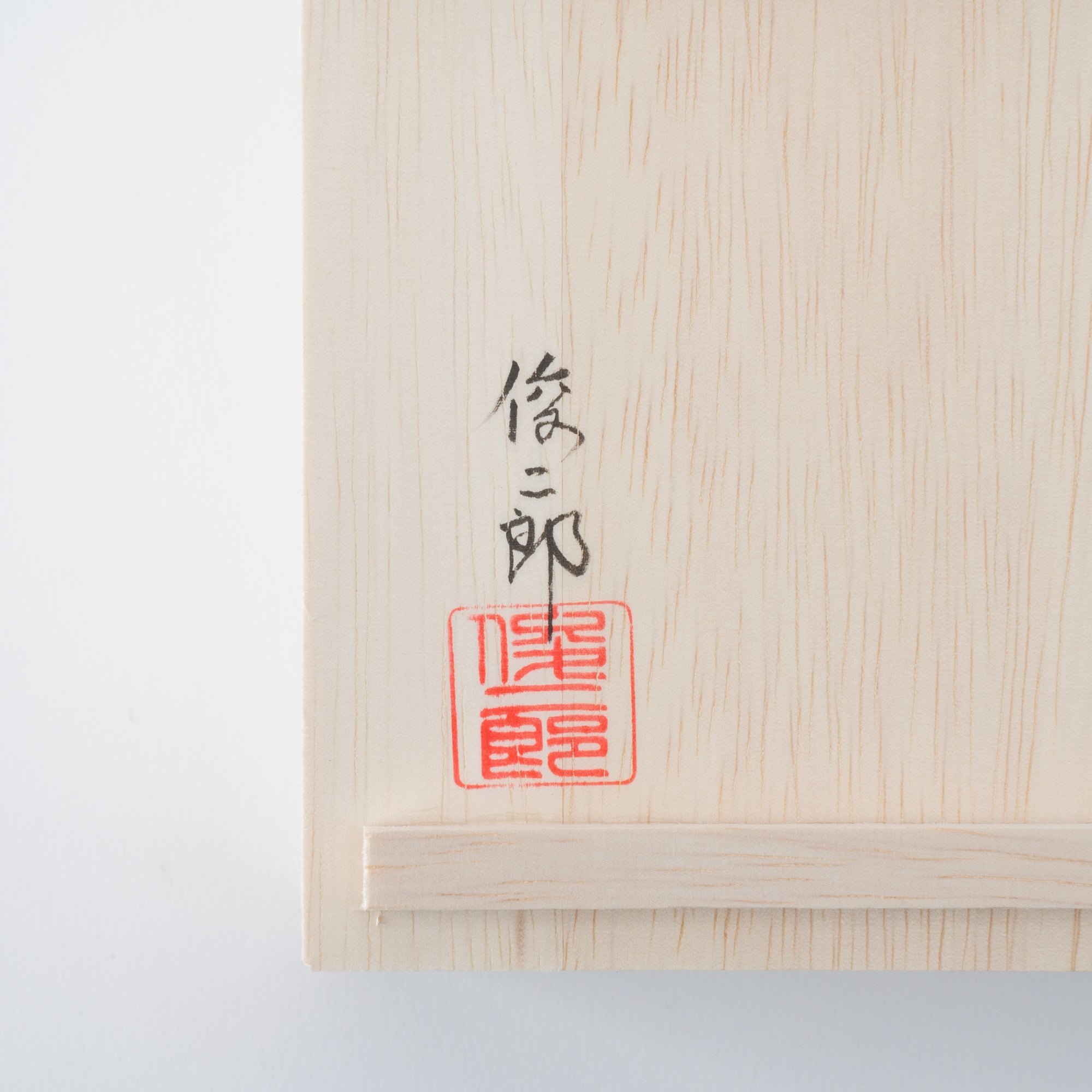
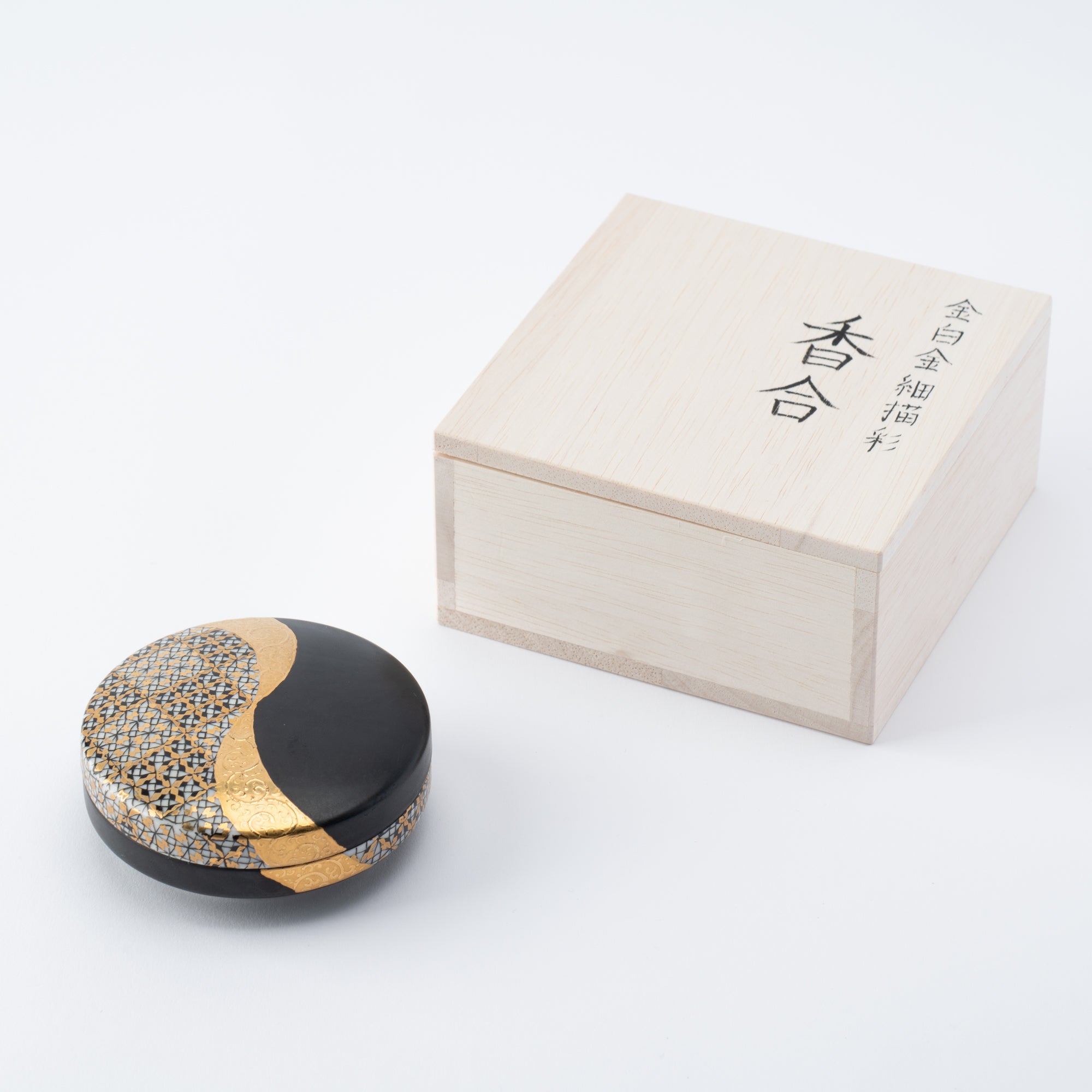
Gold Radiance Kogo Incense Box
The striking contrast between gold and black lends the kogo (incense container) an air of chic sophistication and quiet strength. Geometric patterns in gold and platinum glint across the surface, enriching its modern elegance. On the underside of the container, delicate geometric motifs mirror the design found on the lid’s exterior. Inside the lid, a flower-like motif outlined in raised gold introduces a subtle note of grace. These intricate strokes and layered compositions create a visual rhythm that evokes the mesmerizing depth of a kaleidoscope.
At the heart of this piece lies the artist’s signature technique: kin-hakukin-saibyo (fine gold and platinum painting). The process begins with ultra-fine lines drawn in black gosu, a deep-hued pigment. Next comes shiromori, a raised white enamel, followed by successive layers of gold and platinum. This multilayered method gives the patterns texture and shine, enhancing their dimensionality and brilliance.
The initial design is gently transferred onto the vessel using chikushi, a soft tracing paper. Rather than adhering to a rigid layout, the artist allows the composition to evolve naturally throughout the process. As the work takes shape, lines are adjusted and refined in response to the emerging balance and rhythm of the piece. This fluid, intuitive approach breathes vitality into the design, giving the finished work a sense of organic movement and living presence.
When closed, the patterns on the lid and body align with precision, a refined testament to the artist’s meticulous planning. From every angle, the piece expresses a harmonious aesthetic sensibility.
DETALLES
| Quantity | 1 |
| Size |
Exterior: D 8.5 cm (3.3 in) x H 3.3 cm (1.3 in) Interior: D 7.0 cm (2.8 in) x H 1.5 cm (0.6 in) [Wooden box] L 12.0 cm (4.7 in) x W 12.0 cm (4.7 in) x H 6.0 cm (2.4 in) |
| Weight | 160 g (5.6 oz) |
| Material | Porcelain |
| Package Type | Wooden box |
| Microwave | No |
| Dishwasher | No |
Fabricante / Marca
Página de la colección Ishitomi Shunjiro publicada el 21 de agosto Ishitomi Shunjiro
Through his works in Japanese ceramics, Ishitomi Shunjiro brings a distinct graphic clarity to Kutani porcelain through his intricate linework and luminous detailing. Rooted in tradition but shaped by a personal rhythm, his pieces combine structure and spontaneity in ways that feel both precise and free. Using ultra-fine black gosu lines layered with platinum and gold embellishments, he builds up patterns that shift from floral to geometric to abstract, inviting open interpretation and quiet discovery.
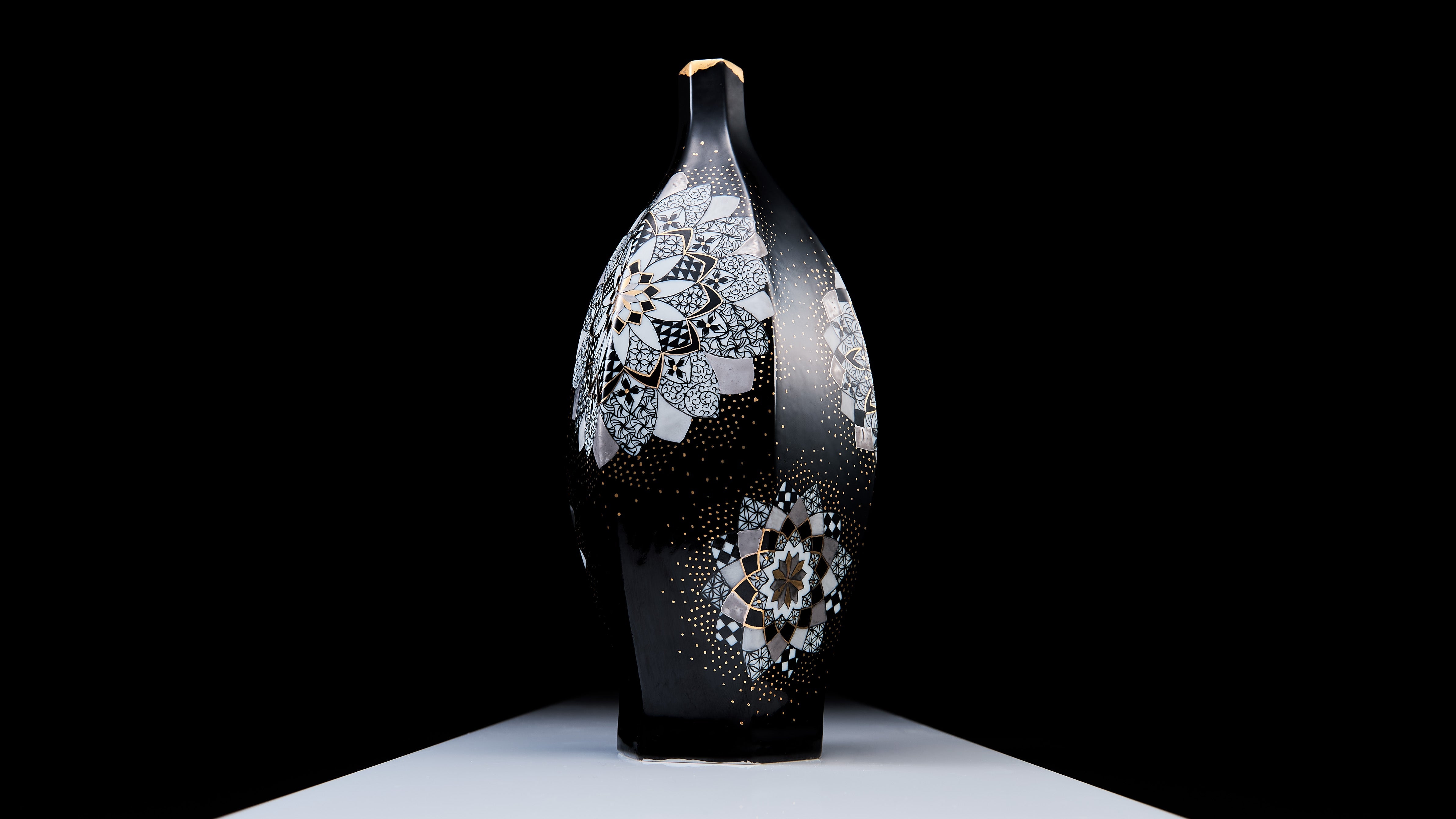
Artesanía
La cerámica Kutani se produce en la región de Kaga, en la prefectura de Ishikawa, con más de 350 años de historia. Se caracteriza por el intenso brillo de sus cinco colores: azul marino, rojo, morado, verde y amarillo. que se aplican a las líneas audaces y atrevidas. Su larga historia se ha desarrollado gracias al esfuerzo incansable y al entusiasmo de quienes han buscado la innovación manteniendo la tradición.
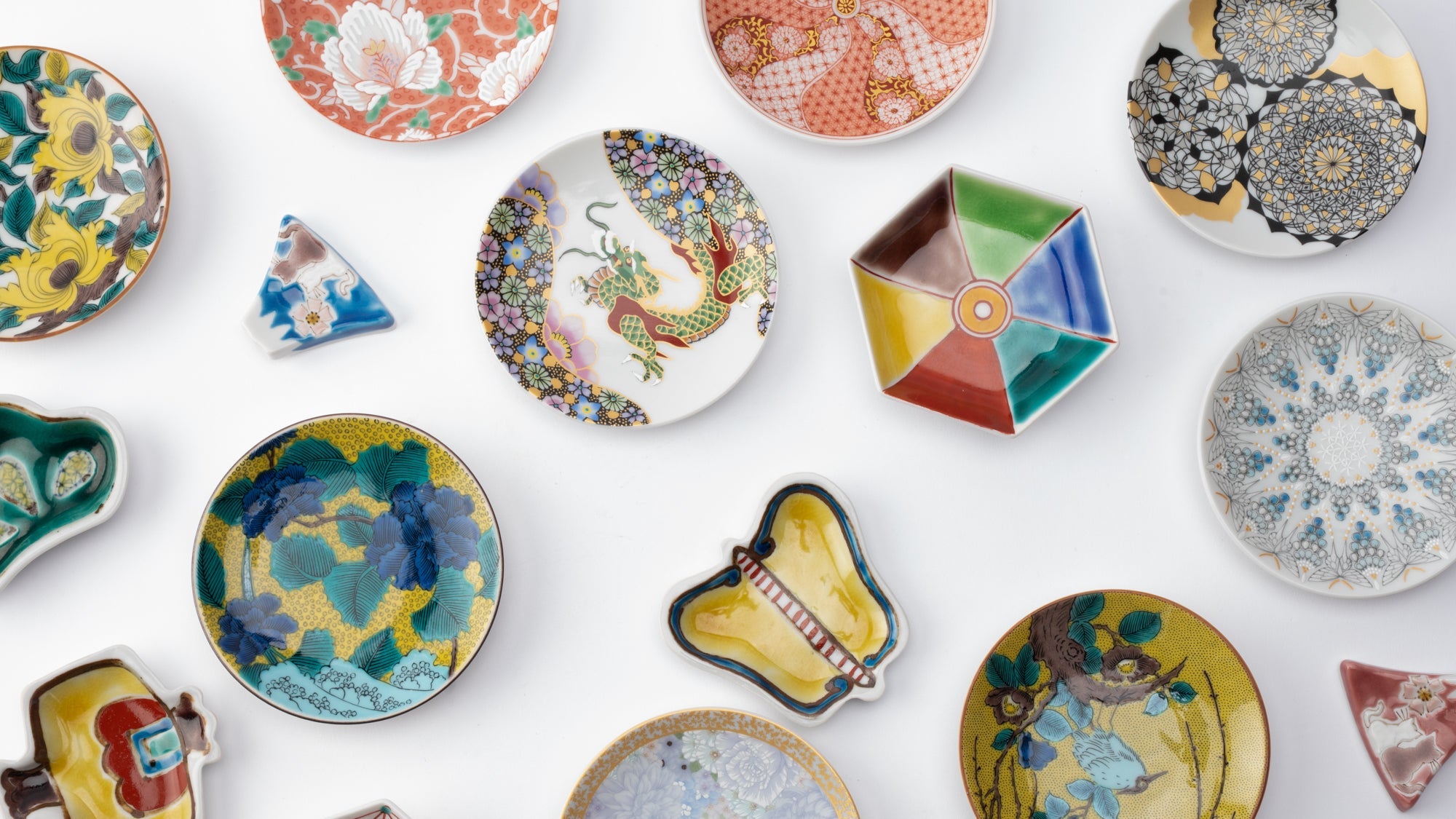
Elige opciones












































About Artist
Galería Musubi
Desde sus inicios, MUSUBI KILN se ha esforzado por presentar al mundo las mejores artesanías tradicionales de maestros de todo Japón.
Aquí, en la Galería, buscamos exhibir las técnicas tradicionales más avanzadas, transmitidas de generación en generación. Podrá descubrir obras de maestros que no solo han perfeccionado estos métodos, sino que también han aportado su imaginación para innovar aún más el oficio.
Algunos de estos maestros incluso han sido nombrados Tesoros Nacionales Vivientes, un título que les otorgó el gobierno japonés para reconocer formalmente su contribución a la artesanía y la cultura, consolidando así su legado y convirtiéndolos en una parte importante de la historia del arte.
Cada pieza se elabora meticulosamente a mano durante muchos meses para crear un tesoro atemporal único. Y cuando esté en tu hogar, tú también formarás parte de esa historia.
Bienvenidos a la Galería. Les invitamos a explorarla con calma.
